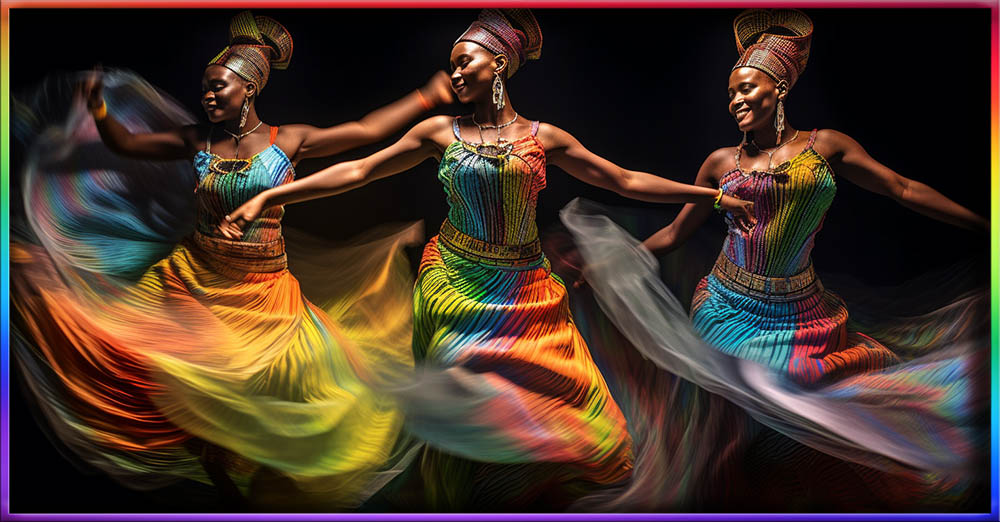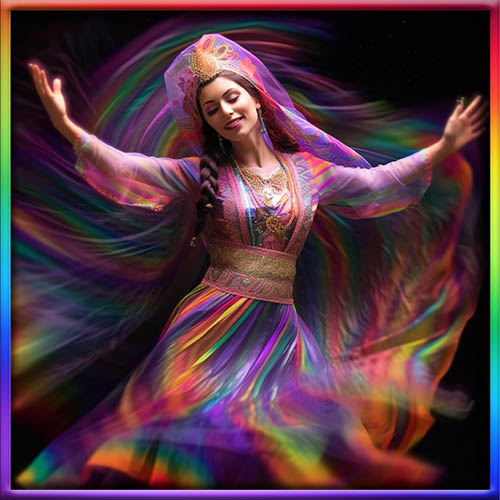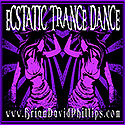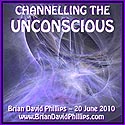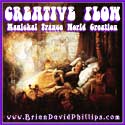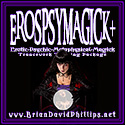
How Ecstatic Shaking Practices Can Supercharge Your Mental Health and Happiness
Abstract
This extensive essay explores the value of shaking phenomena and trance practices as transformative experiences, delving into both traditional spiritual contexts and contemporary secular adaptations. The essay begins with a comprehensive introduction, highlighting the background and significance of studying the positive psychological, emotional, and social benefits of shaking experiences. The thesis statement emphasizes the aim of providing a comparative analysis of these benefits in traditional spiritual practices and contemporary secular adaptations.
The essay dives into the world of traditional spiritual shaking phenomena, starting with an overview of the practices of shakers, including their historical context and religious beliefs. The transformative effects on individuals and communities within shaker communities are analyzed, shedding light on the profound impact of shaking experiences.
The exploration then shifts to whirling dervishes, focusing on their cultural and religious significance. A comparative analysis is conducted, examining the psychological, emotional, and social benefits of whirling dervishes in comparison to other shaking practices. Common threads and unique aspects within these practices are identified, further enhancing the understanding of their transformative potential.
Next, the essay explores Pentecostal spiritual experiences, providing an in-depth exploration of the theological framework and beliefs surrounding shaking within Pentecostalism. The transformative effects on individuals and religious communities are analyzed, highlighting the profound impact of shaking practices within this spiritual tradition.
The essay then transitions into contemporary secular adaptations of shaking phenomena. It examines modern interpretations and adaptations, showcasing examples of spiritual movements integrating shaking practices. The relevance and potential benefits of shaking in secular contexts are discussed, highlighting its potential to enhance personal growth, self-discovery, and overall well-being.
The potential impact of shaking practices in mental health and well-being is explored in-depth. The therapeutic applications of shaking and trance experiences are discussed, highlighting their potential for emotional release, stress reduction, and personal transformation. The effects of shaking on stress reduction, emotional regulation, and resilience are also analyzed, emphasizing the positive impact on individuals’ overall well-being.
In the conclusion, the essay recaps the positive psychological, emotional, and social benefits of shaking phenomena. It provides a summary of the comparative analysis between traditional spiritual and contemporary secular adaptations, highlighting the similarities and differences in their transformative effects. The value of shaking as a gateway to transcendence in various contexts is underscored, emphasizing its potential for personal growth, self-discovery, and community building.
The essay concludes by calling for further research and exploration of shaking phenomena and its potential benefits in diverse populations and settings. It emphasizes the need to continue studying and understanding the transformative power of shaking experiences, paving the way for future integration and utilization in various therapeutic and well-being practices.
Shake Shake Shaking?

Folks who read my blog or watch my videos or take my live trancework trainings know I love ecstatic trance and the phenomena of automatistic shaking or movement. I demonstrate a form of Spontaneous Qigong in most of my classes, seminars, and workshops.
Shaking phenomena and trance practices have long been recognized as potent gateways to transcendence, offering individuals and communities profound spiritual experiences and transformative journeys. From the devout shaking of shakers to the ecstatic spinning of whirling dervishes, and the Pentecostal spiritual encounters marked by powerful bodily movements, these practices have captivated the attention of scholars, religious practitioners, and individuals seeking spiritual fulfillment. In recent times, contemporary adaptations of shaking phenomena have emerged in secular contexts, reflecting a growing interest in exploring the positive psychological, emotional, and social benefits of these experiences.
Understanding the value of shaking phenomena and trance practices requires a comprehensive comparative analysis encompassing traditional spiritual expressions and contemporary secular adaptations. This essay seeks to bridge the gap between these realms by examining the similarities, differences, and transformative effects they impart on individuals and communities. By delving into the realms of shakers, whirling dervishes, Pentecostal spiritual experiences, seiðr, and other forms of automatistic shaking and positive trance, we can gain insight into the potential for personal growth, self-discovery, and enhanced well-being offered by these practices.
The study of shaking phenomena carries significant importance in shedding light on the positive psychological benefits it can provide. The deep emotional catharsis and release experienced during shaking and trance practices offer individuals an avenue for self-exploration and self-expression. Through the embodied nature of these practices, individuals are able to tap into the depths of their emotions, enabling the release of repressed feelings, anxieties, and traumas. This cathartic release not only brings relief but also opens the path for personal growth, as individuals gain a deeper understanding of themselves and their emotional landscapes.
Moreover, shaking phenomena are intricately linked to the realm of transcendence, allowing individuals to transcend their mundane existence and connect with something greater than themselves. This connection can be experienced through various means, such as the communal rituals of shakers, the ecstatic spinning of whirling dervishes, or the intense spiritual encounters in Pentecostalism. The transformative effects of these experiences are often observed in the form of increased feelings of awe, interconnectedness, and a sense of being part of a larger whole. Such transcendental encounters have the potential to instill a profound sense of purpose and meaning in individuals’ lives, leading to a greater sense of fulfillment and satisfaction.
As shaking phenomena continue to evolve and adapt to contemporary contexts, it becomes crucial to examine their relevance and potential benefits in the modern world. The integration of shaking practices into secular environments reflects a growing recognition of their potential to enhance psychological well-being and resilience. Contemporary adaptations of shaking phenomena, found in various spiritual movements and even therapeutic settings, offer individuals alternative avenues for exploring transcendence, self-discovery, and personal transformation.
This essay aims to provide a fairly comprehensive exploration of shaking phenomena as a gateway to transcendence. By conducting a comparative analysis of positive psychological, emotional, and social benefits derived from traditional spiritual practices and contemporary secular adaptations of shaking experiences, we can gain valuable insights into the transformative power of these practices. Understanding the value of shaking phenomena and trance practices allows us to appreciate their potential for personal growth, self-discovery, and enhanced well-being in diverse cultural, religious, and secular contexts.
Shaking Phenomena and Trance Practices

Shaking phenomena and trance practices have deep roots in human history, spanning across diverse cultural, religious, and spiritual traditions. These practices involve rhythmic, involuntary, and often vigorous bodily movements, which are believed to facilitate a heightened state of consciousness, connection with the divine, and transformative experiences. The origins of shaking phenomena can be traced back to ancient times, where they were an integral part of shamanic rituals, tribal ceremonies, and mystical traditions.
Shakers, a religious sect that emerged in the 18th century, believed in the manifestation of the divine through shaking. They practiced communal shaking as a form of worship and spiritual communication, aiming to embody the presence of the Holy Spirit. The shaking was seen as a divine manifestation and a means of purifying the soul, cleansing oneself of sin, and attaining spiritual enlightenment. Shakers believed that through their bodily movements, they could create a sacred space where the divine could manifest and commune with them.
Whirling dervishes, associated with Sufism, the mystical branch of Islam, engage in a unique form of shaking through ecstatic spinning. Inspired by the teachings of the 13th-century poet and mystic Rumi, the whirling dervishes use spinning as a means of achieving a state of spiritual union with God. The repetitive whirling motion serves as a physical meditation, enabling dervishes to transcend their ordinary state of consciousness and enter into a mystical realm. The spinning is not merely a physical act but a deeply spiritual practice aimed at dissolving the ego, attaining spiritual enlightenment, and experiencing the divine presence within.
Pentecostalism, a vibrant and influential Christian movement, also emphasizes shaking phenomena as a core aspect of its spiritual experiences. Pentecostals believe in the infilling of the Holy Spirit, often accompanied by dramatic bodily manifestations, including shaking, trembling, and even falling to the ground. This shaking is considered a sign of spiritual empowerment and an encounter with the divine. Pentecostals interpret the shaking as a release of pent-up spiritual energy and a means of surrendering oneself to the transformative power of the Holy Spirit.
In addition to these traditional spiritual practices, shaking phenomena and trance experiences have found contemporary adaptations in secular contexts. People are increasingly exploring and incorporating shaking into various therapeutic, expressive, and personal growth modalities. These secular adaptations often draw inspiration from the traditional practices mentioned above but adapt them to fit the needs and beliefs of modern individuals. Shaking in secular contexts can be seen as a means of connecting with one’s inner self, releasing emotional blockages, and accessing deeper layers of consciousness for personal transformation and healing.
Shaking phenomena and trance practices have diverse cultural and historical backgrounds. They have been practiced within religious, spiritual, and secular contexts, each with its own unique beliefs, rituals, and interpretations. The common thread among these practices is the belief in the power of shaking to induce altered states of consciousness, connect with the divine, and facilitate personal and spiritual growth. As we delve further into this essay, we will explore the various manifestations and effects of shaking phenomena, both in traditional spiritual practices and contemporary secular adaptations, in order to understand their value as gateways to transcendence.
Positive Psychological, Emotional, and Social Benefits of Shaking Experiences

Understanding the positive psychological, emotional, and social benefits of shaking experiences holds immense significance for individuals, communities, and the field of psychology as a whole. The exploration of these benefits sheds light on the potential therapeutic value of shaking practices, both in traditional spiritual contexts and contemporary secular adaptations. By examining the transformative effects of shaking, we can gain insights into the human capacity for self-discovery, emotional release, and personal growth.
From a psychological perspective, studying the positive benefits of shaking experiences contributes to our understanding of the mind-body connection and the power of embodied practices. Shaking engages the body in a unique way, allowing for the release of tension, stress, and emotional energy that may be stored within. This release can have profound psychological effects, promoting a sense of emotional catharsis, relaxation, and increased well-being. By exploring the psychological mechanisms behind shaking, we can further unravel the interplay between physical movement, emotional states, and mental health.
Moreover, delving into the emotional benefits of shaking experiences provides insights into the potential for healing and emotional regulation. Shaking practices offer individuals a safe and expressive outlet to process and release deep-seated emotions, trauma, and unresolved issues. By shaking, individuals may tap into repressed feelings and allow them to come to the surface, leading to a sense of emotional liberation and psychological integration. Understanding the emotional benefits of shaking experiences can inform therapeutic approaches and interventions, highlighting the potential of shaking as a tool for emotional healing and well-being.
Studying the social benefits of shaking experiences is also crucial, as these practices often take place within communal settings and have implications for group dynamics and social cohesion. Traditional spiritual practices involving shaking, such as those seen in shaker communities or during ecstatic rituals, create a shared experience that fosters a sense of belonging, unity, and collective identity. These practices can strengthen social bonds, facilitate mutual support, and provide a sense of communal purpose. Exploring the social benefits of shaking experiences can shed light on the potential for shaking practices to enhance social connectedness, resilience, and the overall well-being of communities.
Furthermore, understanding the positive psychological, emotional, and social benefits of shaking experiences can challenge societal stigmas and misconceptions surrounding these practices. Shaking is often misunderstood or stigmatized as abnormal behavior or a sign of instability. By highlighting the transformative and beneficial aspects of shaking, we can promote a more nuanced and inclusive understanding of these practices. This can contribute to the destigmatization of shaking experiences and open up avenues for individuals to explore and embrace the potential benefits in a supportive and accepting environment.
Studying the positive psychological, emotional, and social benefits of shaking experiences holds significant importance. It advances our understanding of the mind-body connection, emotional processing, and social dynamics. Furthermore, this research can inform therapeutic approaches, challenge societal stigmas, and promote the acceptance and integration of shaking practices into various contexts. By exploring the transformative effects of shaking experiences, we can uncover the potential for personal growth, emotional healing, and enhanced social well-being, ultimately contributing to a more holistic understanding of human experiences and flourishing.
Positive Psychological, Emotional, and Eocial Benefits of Traditional Spiritual and Contemporary Secular Adaptations of Automatistic Shaking Spiritual Experiences and Trance Practices

The comparative analysis of the positive psychological, emotional, and social benefits of traditional spiritual practices and contemporary secular adaptations of shaking experiences offers valuable insights into the diverse manifestations of shaking phenomena and their transformative effects. By examining both traditional and contemporary contexts, we can gain a comprehensive understanding of the potential benefits that shaking practices hold for individuals and communities.
Traditional spiritual practices, such as those observed in shakers, whirling dervishes, and Pentecostals, provide a foundation for exploring the psychological, emotional, and social dimensions of shaking experiences. These practices are deeply rooted in religious and cultural traditions, offering individuals a sense of belonging, spiritual connection, and personal transformation. Comparative analysis allows us to identify common threads and unique aspects of these traditional practices, providing a broader understanding of how shaking phenomena can facilitate positive psychological and emotional well-being.
Contemporary secular adaptations of shaking phenomena have emerged in response to changing societal contexts and individual needs. These adaptations draw inspiration from traditional practices but often take on new forms and meanings. By examining the positive benefits of shaking in secular contexts, such as within therapeutic settings or personal growth modalities, we can explore the relevance and potential applications of shaking practices in the modern world. Comparative analysis enables us to identify similarities and differences between traditional and secular contexts, illuminating the ways in which shaking experiences can contribute to personal growth, emotional healing, and social connection outside of religious frameworks.
The study of positive psychological, emotional, and social benefits of shaking experiences has broader implications for individual well-being and societal understanding. It provides evidence-based insights into the potential therapeutic value of shaking practices, informing therapeutic approaches and interventions. Moreover, understanding the transformative effects of shaking experiences contributes to a more holistic understanding of human experiences, emotions, and the potential for self-discovery and personal growth. By comparing traditional and contemporary practices, we can bridge the gap between spiritual and secular realms, promoting a more inclusive and nuanced perspective on shaking phenomena.
This essay aims to undertake a comparative analysis of the positive psychological, emotional, and social benefits of traditional spiritual practices and contemporary secular adaptations of automatistic shaking spiritual experiences and trance practices. By exploring the diverse manifestations of shaking phenomena, we can gain valuable insights into their transformative effects and the potential they hold for personal and societal well-being. This comparative analysis contributes to a more comprehensive understanding of shaking experiences and highlights their significance in facilitating personal growth, emotional healing, and social connection in various cultural, religious, and secular contexts.
Traditional Spiritual Shaking Phenomena

Traditional spiritual shaking phenomena have played a significant role in various religious and mystical traditions throughout history, offering individuals a pathway to transcendence, divine connection, and transformative experiences. This section provides an introduction to some of the key traditional spiritual practices associated with shaking, including shakers, whirling dervishes, and Pentecostal spiritual experiences. Understanding the origins, rituals, and beliefs surrounding these practices is crucial for comprehending their role in fostering positive psychological, emotional, and social benefits.
The shakers, also known as the United Society of Believers in Christ’s Second Appearing, emerged in the 18th century as a religious sect characterized by their ecstatic shaking worship. Shakers believed in the manifestation of the divine through bodily movements, particularly shaking, which they viewed as a means of embodying the presence of the Holy Spirit. Shaker worship services involved communal shaking, singing, and dancing, creating an atmosphere of spiritual intensity and divine communion. The shaking was seen as a physical expression of the presence and power of God, leading to spiritual purification, enlightenment, and personal transformation.
Whirling dervishes, associated with Sufism, engage in a distinctive form of spiritual shaking through ecstatic spinning. Inspired by the teachings of the 13th-century poet and mystic Rumi, the whirling dervishes perform a ritual known as Sama, in which they spin in repetitive circles while attired in flowing white garments. The spinning motion serves as a physical meditation and a means of attaining a state of spiritual union with God. Through the spinning, dervishes aim to transcend their ordinary consciousness, quiet the mind, and open themselves to a direct experience of the divine. The spinning represents a form of shaking that facilitates spiritual purification, self-realization, and the dissolution of the ego.
Pentecostal spiritual experiences are marked by intense bodily manifestations, including shaking, trembling, and falling to the ground, as individuals encounter the power of the Holy Spirit. Pentecostalism, a vibrant Christian movement that emerged in the early 20th century, places a strong emphasis on the infilling of the Holy Spirit and the demonstration of spiritual gifts. The shaking experienced by Pentecostals is interpreted as a sign of spiritual empowerment and surrender to the transformative power of the divine. It is believed to release pent-up spiritual energy, cleanse the soul, and facilitate a direct encounter with God. These shaking experiences are often accompanied by heightened emotional states, deepened faith, and a sense of spiritual connection.
The traditional spiritual shaking phenomena described above share common themes and intentions despite their cultural and religious differences. They all involve bodily movements that are believed to facilitate spiritual communion, transcendence, and personal transformation. Through shaking, individuals engage in a form of embodied spirituality, connecting with the divine and transcending their ordinary state of consciousness. These practices emphasize the significance of shaking as a means of releasing emotional energy, purifying the soul, and fostering a sense of awe, reverence, and interconnectedness with the divine and the community.
Traditional spiritual shaking phenomena encompass a range of practices that have played vital roles in various religious and mystical traditions. Shakers, whirling dervishes, and Pentecostal spiritual experiences offer pathways to divine connection, personal transformation, and heightened spiritual awareness. By engaging in bodily movements associated with shaking, individuals participate in rituals that aim to release emotional energy, purify the soul, and facilitate encounters with the transcendent. Understanding these traditional practices sets the stage for a deeper exploration of the positive psychological, emotional, and social benefits of shaking experiences in subsequent sections of this essay.
Spontaneous Qigong: Exploring Ecstatic Trance and Automatism Movement

Spontaneous Qigong is a captivating and enigmatic practice that encompasses the realms of ecstatic trance and automatism movement. Rooted in ancient Chinese traditions, this form of Qigong revolves around the notion of allowing the body to move freely and spontaneously, guided by internal energies and intentions. Through ecstatic trance and automatism movement, practitioners tap into a state of heightened consciousness, bridging the gap between the physical and spiritual realms. This essay delves into the intricacies of spontaneous Qigong, examining the transformative power of ecstatic trance and the profound effects of automatism movement.
Ecstatic Trance in Spontaneous Qigong
At the heart of spontaneous Qigong lies ecstatic trance—a state of altered consciousness where individuals experience a profound connection with their inner selves and the universal energy around them. During ecstatic trance, practitioners enter a state of heightened awareness, transcending the boundaries of the ordinary and accessing deeper layers of their subconscious minds. Through rhythmic breathing, visualization, and meditative techniques, Qigong practitioners unlock the doors to ecstatic trance, enabling them to explore new dimensions of their existence. In this altered state, they often report a sense of euphoria, increased clarity, and a deeper understanding of their place in the universe.
Automatism Movement in Spontaneous Qigong
Automatism movement, another key aspect of spontaneous Qigong, refers to the spontaneous, uncontrolled bodily movements that arise during the practice. These movements are not premeditated or guided consciously but rather manifest as a result of the interplay between the practitioner’s internal energies and the universal life force known as Qi. Automatism movement is an embodiment of the body’s innate intelligence and a direct expression of the Qi flowing within. As practitioners surrender to the movement impulses arising from within, they tap into a state of profound trust in their bodies, allowing Qi to guide and heal them. These movements can vary from gentle swaying and rocking to more vigorous shaking and tremors, symbolizing the release of energetic blockages and the restoration of balance within the body.
Transformative Power
The practice of spontaneous Qigong, with its ecstatic trance and automatism movement, holds immense transformative power for individuals who engage in it consistently. This transformative potential is twofold. Firstly, it fosters a deep sense of mind-body-spirit integration, harmonizing the energetic, emotional, and physical aspects of one’s being. By tapping into ecstatic trance, practitioners gain access to a heightened state of self-awareness, facilitating profound personal growth and spiritual development. Secondly, automatism movement serves as a catalyst for healing and restoration within the body. The spontaneous movements that arise during the practice allow the release of stagnant energy and the cultivation of a vibrant flow of Qi, leading to enhanced vitality, improved well-being, and a renewed sense of balance.
Spontaneous Ecstatic Qigong
Spontaneous Qigong offers a gateway to the mystical realms of ecstatic trance and automatism movement, providing practitioners with a profound tool for self-exploration and healing. Through ecstatic trance, individuals can transcend their everyday consciousness and access deeper layers of their existence. Meanwhile, automatism movement enables them to surrender to the innate wisdom of their bodies, facilitating the release of energetic blockages and the restoration of balance. The transformative power of spontaneous Qigong lies in its ability to integrate the mind, body, and spirit, fostering personal growth, and unlocking the door to a harmonious, vibrant life. By engaging in this ancient practice, individuals embark on a journey of self-discovery and self-healing, unveiling the boundless potential that resides within.
Shakers and Their Shaking Practices

The shakers, formally known as the United Society of Believers in Christ’s Second Appearing, were a religious sect that emerged in 18th-century England and later spread to the United States. Central to the beliefs and practices of the shakers was the notion of shaking as a means of embodying the presence of the Holy Spirit and attaining spiritual communion. This section provides a comprehensive overview of the shakers and their shaking practices, shedding light on the rituals, beliefs, and transformative aspects associated with their religious tradition.
The shakers believed in the manifestation of the divine through bodily movements, particularly shaking, which they viewed as a direct expression of the Holy Spirit within them. Shaker worship services were characterized by communal shaking, singing, and dancing, creating a vibrant atmosphere of spiritual intensity. As believers engaged in ecstatic shaking, they sought to purify their souls, release emotional energy, and experience a profound sense of spiritual presence and unity. Shaking was not merely seen as a physical act but as a deeply spiritual practice that opened the door to personal transformation and divine communion.
The shaking practices of the shakers were not limited to worship services but permeated their daily lives. Shakers embraced a communal lifestyle, living in gender-segregated communities, and adhering to principles of celibacy and shared property. The rhythmic movements and bodily vibrations associated with shaking were considered integral to their way of life. Shakers believed that by engaging in these shaking practices, they could create a sacred space in which the divine could manifest and commune with them, leading to heightened spiritual awareness and inner peace.
The transformative power of shaking for the shakers was not limited to the individual level but extended to the community as a whole. Communal shaking fostered a deep sense of unity, common purpose, and social cohesion among the believers. Through their shared shaking experiences, shakers believed they could create a collective vessel for the Holy Spirit to work within, bringing about spiritual growth, harmony, and divine blessings. Shaker communities were known for their strong sense of cooperation, artistic craftsmanship, and dedication to simplicity, all influenced by their shaking practices and spiritual beliefs.
The shakers’ shaking practices were not without controversy and criticism from external observers. The intense physical manifestations and ecstatic behaviors displayed during their worship services were met with skepticism and even ridicule by some. However, the shakers remained steadfast in their convictions, viewing their shaking practices as a direct channel for experiencing the divine and receiving spiritual guidance. Their commitment to shaking as a spiritual practice persisted despite external scrutiny and challenges.
The shakers embraced shaking as a central aspect of their religious beliefs and practices. Their worship services and daily lives revolved around communal shaking, which was considered a means of embodying the presence of the Holy Spirit and fostering personal and collective spiritual transformation. Shakers viewed shaking as a sacred practice that enabled them to release emotional energy, purify their souls, and connect deeply with the divine. The transformative power of shaking extended beyond the individual, fostering social cohesion and unity within their communities. The shakers’ shaking practices provide a rich historical example of the value and significance of shaking phenomena as a gateway to transcendence and spiritual communion.
Historical Context and Religious Beliefs of Shakers
To fully comprehend the significance of the shakers’ shaking practices, it is essential to delve into the historical context and religious beliefs that shaped their unique tradition. The shakers emerged during a period of religious revivalism in 18th-century England, a time marked by fervent spiritual seeking and the birth of numerous religious movements. Led by Mother Ann Lee, the shakers established their first communal settlement in the United States in 1774, in what is now known as New Lebanon, New York. Understanding the historical backdrop and religious beliefs of the shakers provides crucial context for appreciating the depth and transformative power of their shaking practices.
The historical context of the shakers is closely tied to the tumultuous religious landscape of the time. The 18th century witnessed various religious movements seeking to break away from established churches and pursue more direct and experiential forms of spirituality. The shakers, influenced by Quakerism and other dissenting sects, emerged as a distinct religious community, emphasizing the embodiment of spiritual experiences through physical manifestations, including shaking. They sought to create a pure and utopian society based on the principles of communal living, equality, and direct spiritual revelation.
Central to the religious beliefs of the shakers was the concept of celibacy and the belief in Mother Ann Lee as the manifestation of the Christ Spirit. Mother Ann Lee, revered as the second coming of Christ, held a prominent role in the shaping of shaker theology and practices. Her teachings emphasized the importance of renouncing worldly desires and embracing celibacy as a means of attaining spiritual purity and union with God. The shakers believed that through their celibate and communal lifestyle, they could create a vessel for divine revelation and cultivate a direct relationship with the divine.
The shakers’ religious beliefs were rooted in the concept of dualism, the idea that the physical world was a realm of sin and corruption, while the spiritual realm represented purity and divine perfection. Shaking, in the shaker tradition, was seen as a physical expression of the divine presence, a way to shed the impurities of the flesh and align oneself with the spiritual realm. The shakers believed that by engaging in shaking, they could open themselves to the indwelling of the Holy Spirit, experience spiritual awakening, and achieve a state of union with God.
The shakers’ shaking practices were not confined to their religious rituals but extended to various aspects of their daily lives. Shaking was considered an integral part of their work, dance, and even domestic activities. The rhythmic movements associated with shaking were believed to invite the presence of the Holy Spirit and infuse their everyday actions with spiritual significance and energy. By incorporating shaking into all aspects of their existence, the shakers sought to maintain a constant connection to the divine and live out their spiritual beliefs in a tangible and embodied manner.
The shakers’ shaking practices were shaped by a rich historical context and unique religious beliefs. Emerging during a period of religious revivalism, the shakers sought a direct and experiential spirituality that transcended established church structures. Their belief in celibacy, the leadership of Mother Ann Lee, and the embodiment of the divine through physical shaking were central to their religious ideology. Shaking was not limited to religious rituals but permeated all aspects of shaker life, serving as a constant reminder of their commitment to spiritual purity and divine communion. The historical context and religious beliefs of the shakers provide crucial insights into the motivations and transformative power of their shaking practices.
Transformative Effects on Individuals and Communities

The shaking practices of the shakers had profound transformative effects on both individuals and the communities they formed. By engaging in shaking as a spiritual practice, shakers experienced a range of psychological, emotional, and social transformations that contributed to their personal growth, spiritual development, and communal cohesion. This analysis explores the transformative effects of shaking on individuals and communities within the shaker tradition.
On an individual level, shaking provided a pathway to personal growth and spiritual enlightenment for shakers. Through the physical and emotional release that accompanied shaking, individuals could experience a sense of catharsis, allowing them to let go of accumulated tension, worries, and negative emotions. This release contributed to a greater sense of inner peace, clarity, and emotional well-being. Shakers often reported feeling a deep connection to the divine and a heightened spiritual awareness during and after shaking episodes. These experiences of divine communion and transcendence fostered a sense of purpose, direction, and fulfillment in their spiritual journeys.
Shaking also played a crucial role in the process of self-discovery and self-expression among shakers. As individuals engaged in the physical movements and rhythms of shaking, they became more attuned to their bodies, emotions, and inner experiences. Shaking allowed them to tap into their authentic selves, free from societal expectations and constraints. The intense bodily sensations and emotional release facilitated a deeper understanding of their own desires, fears, and aspirations. Through shaking, shakers were able to express their individuality, connect with their innermost selves, and cultivate a sense of self-acceptance and self-empowerment.
Furthermore, shaking fostered a strong sense of community and social cohesion among shakers. The communal nature of shaking practices created a shared experience of divine presence and unity among believers. Through their collective shaking, shakers forged deep bonds of fellowship, support, and mutual understanding. Shaker communities thrived on the principles of equality, cooperation, and shared purpose, all of which were enhanced through their shaking rituals. Shaking served as a catalyst for social integration, breaking down barriers and fostering a sense of belonging and acceptance within the community.
The transformative effects of shaking on individuals and communities extended beyond the immediate spiritual realm. Shaker communities were known for their exceptional craftsmanship, particularly in the realms of furniture making, textiles, and design. The rhythmic movements and attentiveness cultivated through shaking practices found expression in the precise and beautiful work produced by shakers. Shaking contributed to a heightened focus, discipline, and creativity that permeated all aspects of their communal endeavors. The transformative power of shaking was thus not limited to the spiritual realm but had practical implications for the shakers’ everyday lives.
The shaking practices of the shakers had profound transformative effects on individuals and communities within their religious tradition. Shaking facilitated personal growth, emotional healing, and self-discovery among individuals, allowing them to experience divine communion, heightened spiritual awareness, and a sense of purpose. Shaking also fostered a deep sense of community, social cohesion, and shared purpose within shaker communities. The transformative effects of shaking extended beyond the spiritual realm, influencing their craftsmanship and communal endeavors. The analysis of the transformative effects of shaking on individuals and communities sheds light on the profound and multi-faceted impact of this spiritual practice within the shaker tradition.
Whirling Dervishes and Their Ecstatic Spinning
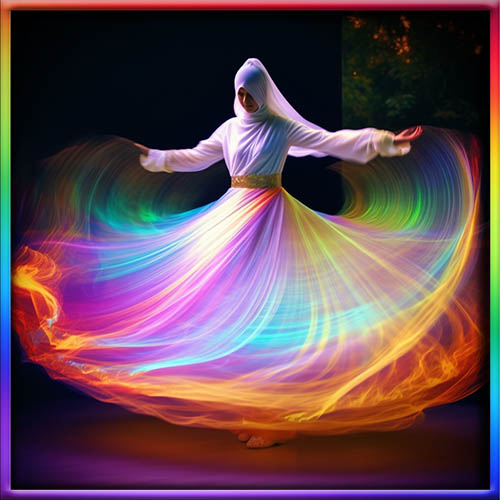
Whirling dervishes, also known as Mevlevi dervishes, are practitioners of a mystical Sufi tradition originating from the teachings of the renowned poet and philosopher, Jalal ad-Din Muhammad Rumi. Central to their practice is the ritualistic spinning, known as “Sema,” which serves as a gateway to ecstatic states of consciousness and spiritual transcendence. This section delves into the practice of whirling dervishes, exploring the significance of their ecstatic spinning and its transformative effects on individuals and communities.
The spinning practice of whirling dervishes is a visual representation of their spiritual journey towards union with the divine. Through continuous circular motion, dervishes aim to transcend the physical realm and enter a state of spiritual ecstasy. The act of spinning is symbolic of the cosmic dance of the celestial spheres, mirroring the movement of the planets and stars. By aligning their physical movements with the cosmic order, dervishes seek to harmonize their inner selves with the divine rhythm of the universe.
The spinning practice of whirling dervishes is not merely a physical act but a deeply spiritual and meditative experience. As dervishes spin, they enter a trance-like state, where they become completely absorbed in the present moment and attuned to the divine presence within and around them. The repetitive motion of spinning serves as a form of active meditation, allowing dervishes to quiet the mind, release attachments to the ego, and cultivate a heightened sense of spiritual awareness.
The ecstatic spinning of whirling dervishes is believed to facilitate a direct experience of divine love and union. Through the spinning, dervishes seek to transcend the limitations of the self and merge with the divine essence. This experience of unity and oneness with God is seen as the ultimate goal of their spiritual journey. The spinning practice serves as a catalyst for inner transformation, leading to a profound sense of spiritual connection, joy, and bliss.
The transformative effects of whirling are not confined to the individual dervishes but extend to the communities they belong to. Whirling dervishes often perform their spinning rituals in the presence of an audience, creating a collective experience of spiritual awakening and inspiration. The mesmerizing sight of dervishes spinning in unison evokes a sense of awe, beauty, and transcendence among spectators. The communal witnessing of the ecstatic spinning creates a shared space for spiritual reflection, contemplation, and the possibility of personal transformation for both dervishes and onlookers.
The transformative power of whirling extends beyond the immediate spiritual experience and permeates other aspects of dervish life. The practice of spinning is deeply integrated into the daily routines of dervishes, shaping their attitudes, values, and interactions with others. The state of mindfulness and presence cultivated through spinning spills over into their relationships, work, and service to their communities. Whirling dervishes are often known for their compassion, humility, and commitment to spiritual growth, all influenced by the transformative effects of their spinning practice.
The spinning practice of whirling dervishes serves as a powerful tool for spiritual transformation and transcendence. The ecstatic spinning allows dervishes to enter states of heightened consciousness, spiritual union, and inner peace. The transformative effects of spinning extend beyond the individual, creating a collective experience of awe, inspiration, and reflection. The practice of whirling shapes the attitudes and behaviors of dervishes, fostering compassion, humility, and a deep commitment to personal and communal growth. The examination of whirling dervishes and their ecstatic spinning sheds light on the profound and transformative nature of this spiritual practice within the context of Sufi mysticism.
Cultural and Religious Significance of Whirling Dervishes

The practice of whirling among the dervishes holds deep cultural and religious significance, representing a rich tapestry of spiritual, artistic, and communal traditions. Originating from the teachings of the renowned Sufi poet and mystic, Rumi, whirling dervishes have become iconic symbols of spiritual devotion and mystical expression. This section explores the cultural and religious significance of whirling dervishes, shedding light on the historical, artistic, and religious dimensions of their practice.
Within the cultural context, whirling dervishes are revered as guardians of a unique artistic and religious heritage. Their spinning rituals have become recognized as a form of sacred dance, blending elements of movement, music, and spirituality. The intricate choreography, precise footwork, and flowing garments of the dervishes create a visually captivating performance that transcends the boundaries of mere entertainment. Whirling dervishes embody an artistic tradition that has been passed down through generations, preserving the cultural heritage and artistic expression associated with Sufi mysticism.
The religious significance of whirling dervishes lies in their adherence to the principles of Sufism, a mystical branch of Islam. Sufism emphasizes the pursuit of inner spiritual knowledge, love, and union with the divine. Whirling serves as a central practice within Sufism, representing the seeker’s longing for union with God and the annihilation of the ego-self. The spinning motion is seen as a metaphorical journey, symbolizing the seeker’s detachment from worldly attachments and the quest for spiritual transformation. Whirling dervishes engage in this practice as a form of devotional worship, aiming to dissolve their individual identities and merge with the divine essence.
Whirling is not solely a physical act but a deeply symbolic and ritualistic practice. The dervishes’ white robes symbolize purity and spiritual rebirth, while the conical hats represent the tombstone of the ego-self. The spinning itself reflects the circular nature of life, death, and rebirth, echoing the cycles of the universe. The repetitive motion, accompanied by music and chanting, induces a trance-like state, allowing dervishes to transcend the physical realm and enter a heightened state of consciousness.
The cultural and religious significance of whirling dervishes extends beyond the individual practitioners. Their performances often take place in the context of communal gatherings, known as “Mawlana” or “Sema” ceremonies. These ceremonies serve as a collective spiritual experience, where both dervishes and spectators partake in the mystical journey of whirling. The audience becomes immersed in the sacred atmosphere, witnessing the dervishes’ spinning as a means to connect with the divine and attain spiritual enlightenment. These ceremonies serve as a reminder of the shared human longing for transcendence and the potential for collective transformation.
The cultural and religious significance of whirling dervishes encompasses a rich tapestry of artistic expression, spiritual devotion, and communal traditions. Whirling dervishes are not only revered for their preservation of a unique artistic heritage but also for their embodiment of the principles and practices of Sufism. Whirling serves as a ritualistic and symbolic practice that represents the seeker’s journey towards spiritual union and the transcendence of the ego-self. The performances of whirling dervishes in communal ceremonies provide a shared experience of spiritual connection and transformation, inviting participants and spectators alike to embark on a mystical journey towards the divine.
Psychological, Emotional, and Social Benefits with Other Shaking Practices

While whirling dervishes engage in ecstatic spinning as a means to achieve spiritual transcendence, it is valuable to compare and analyze the psychological, emotional, and social benefits of their practice in relation to other shaking phenomena. By examining the similarities and differences between whirling dervishes and other shaking practices, we can gain insights into the diverse ways in which shaking experiences contribute to personal growth, emotional well-being, and social connectedness. This section provides a comparative analysis of the psychological, emotional, and social benefits of whirling dervishes in relation to other shaking practices, highlighting the distinctiveness and commonalities of these transformative experiences.
One notable comparison can be made between the whirling dervishes and the shaking practices within Pentecostalism. Both traditions emphasize the potential for spiritual transcendence through physical movement and altered states of consciousness. In both cases, shaking serves as a means of releasing emotional and spiritual blockages, allowing individuals to experience a deep sense of connection with the divine. The psychological benefits of these practices include a sense of catharsis, emotional release, and heightened spiritual awareness. Individuals in both traditions often report feelings of inner peace, clarity, and a profound sense of purpose following their shaking experiences.
However, there are also notable differences between whirling dervishes and shaking practices within Pentecostalism. The context, religious beliefs, and cultural expressions surrounding these practices vary significantly. Whirling dervishes engage in spinning as part of a ritualistic and deeply contemplative practice within the Sufi tradition. The emphasis is on the seeker’s personal journey towards spiritual union. In contrast, shaking experiences within Pentecostalism are often associated with collective worship and communal manifestations of the Holy Spirit. The social benefits of shaking within Pentecostalism include a sense of belonging, communal support, and shared spiritual experiences that reinforce a sense of religious identity and connectedness.
Another shaking practice that can be compared to whirling dervishes is the seiðr tradition of the ancient Norse culture. Seiðr involves conscious and unconscious shaking and trance-like states as a means of connecting with the spirit world and accessing hidden knowledge. While the cultural and religious contexts differ greatly between whirling dervishes and seiðr practitioners, there are intriguing parallels in terms of the transformative effects. Both practices can lead to altered states of consciousness, a sense of connection with the divine or the spirit realm, and an expansion of one’s spiritual understanding. The psychological and emotional benefits may include increased self-awareness, intuitive insights, and a deepening of one’s spiritual path.
Furthermore, contemporary adaptations of shaking practices in secular contexts, such as ecstatic dance or conscious movement practices, offer a different perspective. These secular adaptations often draw from various spiritual traditions, including elements of shaking and trance. The focus is on personal growth, self-expression, and emotional well-being. Through intentional movement and shaking, individuals can release tension, access their creativity, and cultivate a greater sense of vitality and embodied presence. The social benefits of these secular adaptations may include a sense of community, self-acceptance, and connection with others who share similar interests and values.
The comparative analysis of the psychological, emotional, and social benefits of whirling dervishes with other shaking practices reveals both similarities and differences. These practices share a common intention of personal growth, spiritual transcendence, and emotional well-being. The psychological benefits often include catharsis, emotional release, heightened awareness, and a sense of purpose. Socially, shaking practices foster a sense of belonging, communal support, and shared spiritual experiences. However, the cultural, religious, and contextual differences contribute to unique aspects of each practice.
Pentecostal Spiritual Experiences and the Role of Shaking

Pentecostalism is a vibrant and globally influential religious movement that places a significant emphasis on spiritual experiences and manifestations of the Holy Spirit. Within the Pentecostal tradition, shaking phenomena hold a prominent role in the expression of intense religious devotion and encounter with the divine. This section explores the nature of Pentecostal spiritual experiences, the role of shaking within these encounters, and the transformative effects they have on individuals and communities.
Pentecostal spiritual experiences are characterized by a fervent pursuit of a personal and direct encounter with the Holy Spirit. Believers seek to experience the presence and power of God in their lives through a range of spiritual practices, including prayer, worship, and participation in religious rituals. One of the distinctive features of Pentecostalism is the belief in the baptism of the Holy Spirit, which is often accompanied by various physical and emotional manifestations, including shaking.
Shaking, or “shaking under the power,” is considered a visible sign of the Holy Spirit’s presence and work within an individual. It is commonly experienced during times of intense prayer, worship, or during religious gatherings such as revival meetings. The shaking can manifest as trembling, convulsions, or an uncontrollable movement of the body. Pentecostals interpret this shaking as a physical response to the spiritual power and presence of God, indicating an overwhelming experience of divine encounter and transformation.
The role of shaking in Pentecostal spiritual experiences is multi-faceted. Firstly, it serves as a physical expression of surrender and submission to God’s will. Pentecostals believe that when they yield themselves completely to the Holy Spirit, their bodies may be taken over by divine power, resulting in shaking or trembling. This physical response is seen as a tangible sign of one’s openness to the movement of the Spirit and a surrender to God’s transformative work in their lives.
Secondly, shaking is considered a means of purification and cleansing. Pentecostals believe that through the shaking, the Holy Spirit purges and removes spiritual impurities, sins, and negative influences. It is seen as a process of spiritual refinement and sanctification, leading to a deeper sense of holiness and consecration. The physical shaking is therefore embraced as a transformative and purifying experience, facilitating personal growth and spiritual maturity.
Additionally, shaking in Pentecostalism is believed to have a healing and deliverance aspect. It is seen as a mechanism through which the Holy Spirit can bring physical and emotional healing, as well as deliverance from spiritual bondages or demonic influences. Pentecostals attribute testimonies of miraculous healings and freedom from various afflictions to the power of the Holy Spirit, often accompanied by shaking. The physical shaking is perceived as a channel through which divine healing and liberation are made manifest.
The transformative effects of shaking experiences in Pentecostalism extend beyond the individual to the wider community. Shaking phenomena play a significant role in creating a sense of unity, shared identity, and collective spiritual encounter. In communal worship settings, when individuals experience shaking simultaneously, it fosters a deep sense of solidarity and a recognition of the corporate presence of the Holy Spirit. The communal nature of these experiences builds a strong bond among believers, reinforcing a shared sense of faith and providing support during times of personal transformation and spiritual growth.
Shaking phenomena hold a vital role within Pentecostal spiritual experiences. It serves as a physical manifestation of the Holy Spirit’s presence, indicating an intense encounter with the divine. Shaking is perceived as a visible sign of surrender, purification, healing, and deliverance, facilitating personal and communal transformation. Through shaking, Pentecostals find a tangible expression of their faith.
Theological Framework and Beliefs Surrounding Shaking in Pentecostalism

The role of shaking in Pentecostalism is deeply rooted in the movement’s theological framework and beliefs. Pentecostal theology centers around the belief in the present-day work of the Holy Spirit, emphasizing the experience of spiritual gifts and manifestations of divine power. Understanding the theological underpinnings provides insight into why shaking is seen as a significant expression of the Holy Spirit’s activity within Pentecostal spiritual experiences.
One key theological concept in Pentecostalism is the baptism of the Holy Spirit. Pentecostals believe that this experience is subsequent to salvation and is characterized by the empowering presence of the Holy Spirit in the life of a believer. They draw inspiration from the biblical account of the Day of Pentecost, where the early disciples experienced the outpouring of the Holy Spirit, marked by tongues of fire and the ability to speak in other languages. Pentecostals view the baptism of the Holy Spirit as a distinct experience that can be accompanied by various physical and emotional manifestations, including shaking.
The practice of shaking in Pentecostalism finds biblical support in passages that describe instances of individuals being affected by the presence and power of God. For example, in the Old Testament, prophets like Ezekiel and Daniel experienced physical trembling or falling down in the presence of God’s glory. In the New Testament, the account of Saul’s encounter with Jesus on the road to Damascus portrays him being struck by a bright light and falling to the ground. These scriptural examples contribute to the understanding that physical manifestations, including shaking, can be an authentic response to encountering the divine.
Pentecostals interpret shaking as a manifestation of the power and presence of the Holy Spirit. They believe that the shaking is a physical response to the spiritual energy released during times of intense prayer, worship, or spiritual encounters. Shaking is viewed as evidence that the Holy Spirit is actively working within an individual, transforming their spiritual condition and bringing about personal and communal renewal.
Furthermore, the theological framework of Pentecostalism emphasizes the concept of the immanence of God. Immanence refers to the belief that God is actively present and involved in the world and in the lives of individuals. Pentecostals see shaking as a tangible way in which God’s immanence is experienced. It is seen as a direct encounter with the divine, where individuals feel the power and energy of God moving within them. Shaking is considered a physical sign that God is actively working in the lives of believers, guiding, empowering, and transforming them.
The beliefs surrounding shaking in Pentecostalism also connect with the concept of spiritual warfare. Pentecostals believe that there is a spiritual battle between the forces of good and evil, and shaking is seen as a manifestation of spiritual conflict. It is believed that shaking can be a response to the presence of demonic influence or spiritual oppression. In this understanding, shaking becomes an act of resistance against negative spiritual forces, a means of breaking free from spiritual bondage, and a demonstration of the victory of Christ over evil.
The theological framework and beliefs surrounding shaking in Pentecostalism provide a context for understanding its significance within the movement. Pentecostals view shaking as a physical manifestation of the Holy Spirit’s activity, particularly in relation to the baptism of the Holy Spirit. Shaking is seen as a response to encountering the divine, an expression of God’s immanence, and a demonstration of spiritual power in the face of spiritual warfare. The theological framework underscores the conviction that shaking is a genuine and transformative encounter with the living God, leading to personal and communal spiritual growth and renewal.
Transformative Effects on Individuals and Religious Communities
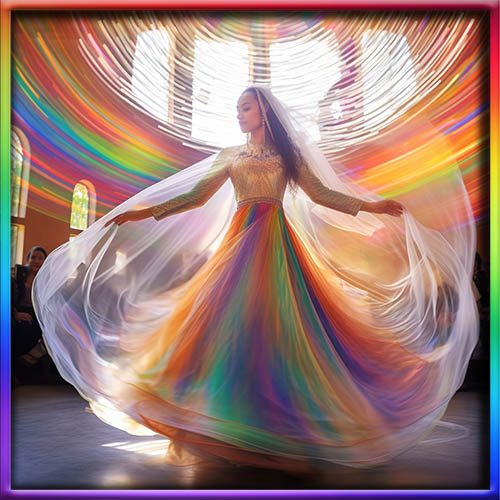
The shaking experiences within Pentecostalism have profound transformative effects on both individuals and religious communities. These effects encompass various aspects of personal growth, emotional well-being, and the development of religious identity. Analyzing the transformative effects of shaking provides valuable insights into the significance and impact of these experiences within the context of Pentecostal spirituality.
At an individual level, shaking experiences within Pentecostalism often lead to a heightened sense of spiritual awareness and connection. Believers report experiencing a deepened intimacy with God, a greater sensitivity to the Holy Spirit’s guidance, and a heightened awareness of their own spiritual journey. The shaking serves as a catalyst for personal transformation, facilitating a renewed commitment to faith, and a desire to live out the teachings of Christianity with greater fervor and dedication.
Shaking also contributes to emotional healing and restoration within individuals. Pentecostals attribute the experience of shaking to the presence of the Holy Spirit bringing about emotional catharsis and inner healing. The physical manifestation of shaking is often accompanied by the release of pent-up emotions, leading to a sense of relief, freedom, and emotional well-being. This process of emotional healing helps individuals overcome past traumas, burdens, and emotional blockages, allowing them to experience a greater sense of wholeness and emotional stability.
Moreover, shaking experiences play a significant role in the formation of religious identity and community cohesion. The collective nature of Pentecostal worship, where individuals often experience shaking together, creates a sense of unity and shared spiritual encounter. Shaking serves as a common thread that binds believers together, fostering a strong sense of religious community and support. The shared experiences of shaking contribute to the formation of a distinct Pentecostal identity, reinforcing a sense of belonging and connection with other members of the faith.
Religious communities within Pentecostalism are often characterized by a culture of participation and engagement. Shaking experiences contribute to the active involvement of individuals within the community, as it is seen as a sign of spiritual engagement and commitment. The transformative effects of shaking experiences motivate believers to become more active in their faith communities, participating in various religious activities, and seeking opportunities for service and ministry. Shaking experiences thus play a role in strengthening religious communities by encouraging active participation and fostering a sense of shared purpose and mission.
Furthermore, the transformative effects of shaking experiences extend beyond the confines of religious communities. Individuals who have experienced shaking within Pentecostalism often report positive changes in their personal and professional lives. They attribute these changes to the spiritual growth, emotional healing, and enhanced sense of purpose that the shaking experiences have brought about. Individuals may experience increased confidence, improved relationships, and a sense of empowerment to pursue their goals and aspirations.
The transformative effects of shaking experiences within Pentecostalism are far-reaching and impactful. These experiences lead to heightened spiritual awareness, emotional healing, and a deepened commitment to faith. Shaking fosters a strong sense of religious identity and community cohesion, contributing to the formation of religious communities characterized by active participation and engagement. Moreover, the transformative effects extend to individuals’ personal and professional lives, influencing their overall well-being and sense of purpose. Understanding the transformative effects of shaking experiences within Pentecostalism provides valuable insights into the profound impact of these practices on the lives of individuals and the dynamics of religious communities.
Shaking Phenomena and Positive Trance Experiences

Shaking phenomena and positive trance experiences have been present in various spiritual and cultural traditions throughout history. These practices involve altered states of consciousness characterized by involuntary shaking, trembling, or rhythmic movements, which are often accompanied by feelings of euphoria, transcendence, and connection to a higher power or spiritual realm. This section introduces the concept of shaking phenomena and positive trance experiences, exploring their historical and cultural contexts, as well as their significance in facilitating personal and collective transformation.
Shaking phenomena, also known as ecstatic shaking or spontaneous movement, refer to the involuntary and rhythmic shaking or trembling of the body that occurs during trance-like states. These experiences are found in a wide range of spiritual and religious traditions, including shamanism, indigenous practices, mystical Sufism, and neo-Pagan rituals. The shaking is often considered a manifestation of the individual being filled with divine or spiritual energy, leading to an altered state of consciousness and a sense of transcendence.
Positive trance experiences, on the other hand, encompass a broader spectrum of altered states of consciousness characterized by heightened awareness, relaxation, and a deep sense of connection. These experiences can be induced through various methods, such as meditation, rhythmic movements, chanting, or the use of entheogens. Positive trance experiences are sought after for their potential to promote personal growth, self-discovery, and spiritual enlightenment. The shaking phenomena are often an integral part of these trance experiences, serving as a physical expression of the deep inner transformation occurring within the individual.
Historically, shaking phenomena and positive trance experiences have been viewed as gateways to accessing higher realms of consciousness, transcending the limitations of ordinary reality, and establishing a connection with the divine or spiritual dimensions. In many cultures, these practices are considered sacred and are believed to enable individuals to commune with spiritual entities, receive guidance, and access deeper wisdom and knowledge. The shaking movements are seen as a vehicle for spiritual energy to flow through the body, facilitating the dissolution of ego boundaries and enabling a direct experience of the transcendent.
Beyond their spiritual and religious contexts, shaking phenomena and positive trance experiences have gained attention in contemporary psychology and neuroscience. Researchers have explored the therapeutic potential of these practices, noting their ability to induce states of relaxation, reduce stress and anxiety, and promote overall well-being. The shaking movements are believed to release tension and stagnant energy from the body, facilitating a cathartic experience and promoting emotional and physical healing. Furthermore, positive trance experiences have been associated with increased creativity, enhanced problem-solving abilities, and a heightened sense of self-awareness.
Shaking phenomena and positive trance experiences are fascinating aspects of human spirituality and consciousness. These practices have deep historical and cultural roots, serving as pathways to transcendent states and facilitating personal and collective transformation. The shaking movements and altered states of consciousness associated with these experiences are believed to foster a deep sense of connection, promote emotional and physical healing, and enhance overall well-being. Understanding the historical, cultural, and psychological dimensions of shaking phenomena and positive trance experiences provides a broader context for analyzing their value and significance in contemporary society.
Ecstatic and Transformative Aspects of Shaking Phenomena

Shaking phenomena possess ecstatic and transformative qualities that have captivated individuals and communities throughout history. The ecstatic nature of shaking is characterized by a profound sense of joy, euphoria, and heightened energy that permeates the body and soul during these experiences. It is often described as a state of ecstasy, where individuals feel an intense connection to the divine, a release of inhibitions, and an overwhelming surge of spiritual energy.
During shaking experiences, individuals may enter altered states of consciousness that transcend their ordinary sense of self. The shaking movements serve as a physical manifestation of the internal processes occurring within the individual, representing a release of stored energy, emotions, and tensions. This cathartic process can result in a sense of liberation, allowing individuals to shed emotional burdens and connect with their authentic selves on a deeper level.
The transformative aspects of shaking phenomena are multifaceted. On an individual level, shaking can catalyze personal growth, self-discovery, and spiritual development. The shaking movements facilitate the opening of channels for divine energy to flow, enabling individuals to access deeper layers of their consciousness and tap into their inherent spiritual potential. This process can lead to profound insights, expanded awareness, and a reconnection with one’s true purpose and inner wisdom.
Shaking phenomena also have transformative effects on religious and spiritual communities. As individuals within a community engage in shaking practices collectively, a powerful sense of unity, shared experience, and communal bonding is fostered. The shaking becomes a unifying force that transcends individual differences and connects participants on a deeper, spiritual level. This shared transformative experience strengthens the communal fabric, deepens spiritual relationships, and cultivates a sense of collective purpose and mission.
Furthermore, the transformative effects of shaking phenomena extend beyond the individuals and communities directly involved. The energy and vibration generated through shaking can have ripple effects that permeate the surrounding environment. These energetic shifts may create a positive and uplifting atmosphere, influencing others who witness or engage with the shaking practice. The transformative power of shaking can inspire and motivate individuals to seek their own spiritual experiences, leading to a broader impact on society as a whole.
It is important to note that the transformative aspects of shaking phenomena are not limited to specific cultural or religious contexts. Shaking practices can be found in diverse traditions and spiritual paths, ranging from ancient indigenous rituals to contemporary secular adaptations. Regardless of the specific framework in which shaking occurs, the transformative nature of the experience remains a common thread, offering individuals an opportunity for personal and collective growth, healing, and transcendence.
Shaking phenomena encompass both ecstatic and transformative qualities that have captivated individuals and communities throughout history. The ecstatic aspects of shaking involve intense joy, connection to the divine, and an overflow of spiritual energy. The transformative effects of shaking are experienced at individual and communal levels, fostering personal growth, self-discovery, and a deepening of spiritual connections. These practices have the potential to inspire profound insights, promote emotional and physical healing, and create a sense of unity and purpose within religious and spiritual communities. The transformative power of shaking phenomena extends beyond the immediate participants, influencing the broader society and inspiring others to seek their own transformative experiences.
Psychological and Physiological Mechanisms Behind Positive Trance Experiences through Shaking

Positive trance experiences induced through shaking phenomena involve complex psychological and physiological processes that contribute to their transformative nature. Understanding the underlying mechanisms behind these experiences sheds light on their psychological and physiological effects, providing insights into the benefits individuals derive from them.
Psychologically, positive trance experiences through shaking can be attributed to a combination of factors. One key element is the alteration of consciousness, where individuals enter a state that transcends their ordinary waking awareness. This altered state is often characterized by a heightened sense of presence, expanded perception, and a shift in the individual’s sense of self. The shaking movements serve as a catalyst for this altered state, helping individuals disengage from their everyday thoughts and concerns and enter a more receptive and open mental state.
The shaking-induced altered state of consciousness can also lead to the activation of the limbic system, which is responsible for emotional processing and regulation. During shaking, the limbic system is stimulated, resulting in the release of endorphins, dopamine, and other neurochemicals associated with pleasure, reward, and emotional well-being. This neurochemical cascade contributes to the feelings of joy, euphoria, and emotional release commonly experienced during positive trance experiences through shaking.
Moreover, shaking phenomena can facilitate the experience of flow, a psychological state characterized by complete absorption and immersion in an activity. When individuals engage in shaking practices, they enter a state of deep focus and surrender, where they are fully present in the moment and immersed in the physical sensations and energy flowing through their bodies. This state of flow enhances feelings of connectedness, purpose, and fulfillment, leading to a sense of psychological well-being and personal transformation.
Physiologically, shaking experiences through positive trance engage various bodily systems, contributing to the transformative effects. The rhythmic shaking movements stimulate the autonomic nervous system, activating the sympathetic branch, which is responsible for the body’s fight-or-flight response. This activation can lead to an increase in heart rate, blood pressure, and respiration, promoting a state of heightened physiological arousal.
Simultaneously, the shaking movements also stimulate the parasympathetic branch of the autonomic nervous system, which is associated with rest, relaxation, and restoration. This activation brings about a state of deep relaxation and release of tension in the body. The combination of sympathetic and parasympathetic activation creates a dynamic balance within the nervous system, promoting a state of heightened energy and relaxation simultaneously.
The shaking-induced activation of the body’s energy centers, such as the chakras or meridians, is also thought to play a role in positive trance experiences. These energy centers are believed to be connected to various physical, emotional, and spiritual aspects of the individual. The shaking movements help to clear blockages and restore the smooth flow of energy within these centers, promoting a sense of harmony, balance, and vitality.
Positive trance experiences through shaking involve a complex interplay of psychological and physiological mechanisms. The altered state of consciousness, activation of the limbic system, experience of flow, and engagement of the autonomic nervous system and energy centers all contribute to the transformative effects. These mechanisms collectively promote emotional release, heightened awareness, deep relaxation, and a sense of connection and well-being. By understanding the psychological and physiological mechanisms behind positive trance experiences through shaking, we gain valuable insights into how these practices can facilitate personal growth, healing, and transformation.
Personal Growth, Self-Discovery, and Enhanced Well-Being in Individuals Practicing Shaking Trance

The practice of shaking trance holds significant potential for personal growth, self-discovery, and enhanced well-being in individuals who engage in these experiences. The transformative nature of shaking trance allows individuals to explore and navigate the depths of their inner selves, leading to profound shifts in their perspectives, beliefs, and understanding of themselves and the world around them.
One key aspect of shaking trance is its ability to facilitate emotional release and healing. The shaking movements serve as a physical outlet for the release of stored emotional energy, allowing individuals to let go of past traumas, emotional blockages, and negative patterns. Through the rhythmic shaking, individuals can access and process suppressed emotions, leading to a cathartic experience and a sense of emotional liberation. This emotional release fosters healing, promotes resilience, and allows individuals to cultivate a greater sense of emotional well-being.
Shaking trance also offers individuals an opportunity for self-discovery and self-exploration. The altered states of consciousness induced through shaking open doors to deep inner realms of the self that are often inaccessible in ordinary waking life. In these states, individuals may gain insights into their true nature, uncover hidden aspects of their personality, and connect with their authentic selves. This self-exploration can lead to a profound sense of self-acceptance, self-awareness, and self-empowerment, enabling individuals to live more authentic and fulfilling lives.
Furthermore, shaking trance experiences can catalyze spiritual growth and connection. As individuals engage in shaking practices, they often report a heightened sense of connection to the divine, a transcendent realm, or a universal consciousness. This connection can deepen one’s spiritual beliefs, strengthen their faith, and provide a sense of meaning and purpose in life. The experience of shaking trance allows individuals to transcend the limitations of their ego and tap into a broader spiritual reality, leading to a deepened sense of spirituality and an expanded worldview.
The transformative effects of shaking trance extend beyond the individual, impacting their relationships and social connections. As individuals engage in shaking practices within a community setting, a sense of collective experience and shared spiritual journey emerges. This communal aspect fosters a sense of belonging, unity, and support, leading to the formation of deep connections and the strengthening of social bonds. The shared transformative experience creates a fertile ground for compassion, empathy, and mutual growth, enhancing the overall well-being of the community.
Moreover, the enhanced well-being experienced through shaking trance can have ripple effects in various aspects of an individual’s life. The emotional release and healing fostered through shaking can lead to improved mental health, reduced stress, and increased resilience. The self-discovery and self-empowerment gained from these experiences can translate into increased confidence, assertiveness, and personal fulfillment. The deepened spiritual connection and sense of meaning can provide individuals with a compass for navigating life’s challenges and finding a greater sense of purpose.
Shaking trance holds immense potential for personal growth, self-discovery, and enhanced well-being. The emotional release, self-exploration, and spiritual connection facilitated through shaking allow individuals to navigate their inner worlds, heal emotional wounds, and connect with their authentic selves. These transformative experiences foster personal resilience, emotional well-being, and a sense of purpose and meaning. Additionally, the communal aspect of shaking trance promotes social connection, unity, and collective growth. By engaging in shaking trance practices, individuals can embark on a transformative journey that leads to holistic well-being and a deeper understanding of themselves and the world around them.
Similarities and Differences Between Different Shaking Practices

Shaking practices, although diverse in their cultural and religious contexts, share certain fundamental aspects while also displaying distinct characteristics. A comparative analysis of these shaking practices allows us to explore their similarities and differences, providing valuable insights into the diverse ways in which shaking is employed as a pathway to transcendence.
At a foundational level, one commonality among various shaking practices is the use of physical movement as a means to access altered states of consciousness. Whether it is the shaking of the body, spinning, or other rhythmic movements, these practices utilize the body as a vehicle for transcendence. By engaging in these movements, individuals enter into a state of heightened awareness and connection to the spiritual realm.
While the objective of shaking practices is often to induce trance-like states, the specific purposes and intentions can differ across traditions. For example, shakers, whirling dervishes, and practitioners of Pentecostalism may seek spiritual communion and divine connection through their shaking experiences. The shaking serves as a medium through which individuals can express devotion, surrender to a higher power, and receive spiritual revelations. On the other hand, contemporary secular adaptations of shaking practices may focus more on personal growth, self-exploration, and stress relief, employing shaking as a form of therapeutic or meditative technique.
Another aspect of comparison lies in the cultural and religious symbolism embedded within shaking practices. Shakers, for instance, see shaking as a physical manifestation of the presence of the divine within them. Their shaking movements are interpreted as a response to the spiritual energy flowing through their bodies. Similarly, whirling dervishes view their spinning as a symbolic act of cosmic dance, representing the rotation of the planets and the unity of all creation. In contrast, Pentecostal shaking is often associated with the manifestation of the Holy Spirit and the spiritual gifts bestowed upon believers.
Furthermore, the social and communal dimensions of shaking practices vary across traditions. Shakers often engage in communal shaking, where the collective participation amplifies the energy and spiritual experience. The community aspect is integral to their practice, fostering a strong sense of belonging, cooperation, and shared spiritual journey. In contrast, whirling dervishes primarily engage in individual spinning within a group setting, emphasizing the personal journey of each practitioner while maintaining a sense of unity. Pentecostal shaking experiences occur in the context of congregational worship, where the collective participation creates a charged atmosphere and a shared sense of spiritual fervor.
While these shaking practices differ in their cultural and religious contexts, they all offer transformative potential for individuals and communities. The shared transformative effects include emotional release, spiritual connection, personal growth, and a sense of well-being. The physical movements in shaking practices allow individuals to tap into their inner selves, connect with higher powers, and experience transcendence beyond ordinary states of consciousness.
A comparative analysis of shaking practices reveals both shared elements and distinct characteristics. The use of physical movement to induce altered states of consciousness is a common thread among different shaking traditions. While their specific purposes, cultural symbolism, and social dimensions may differ, these practices offer individuals transformative experiences that transcend the boundaries of everyday awareness. By understanding the similarities and differences among shaking practices, we gain a deeper appreciation for the diversity and richness of human spiritual experiences and the various pathways to transcendence they provide.
Psychological, Emotional, and Social Benefits in Shakers, Whirling Dervishes, and Pentecostals

Shakers, whirling dervishes, and Pentecostals engage in shaking practices with the shared intention of accessing spiritual experiences and achieving transcendence. While the specific cultural and religious contexts of these practices differ, they all offer psychological, emotional, and social benefits to their practitioners. A comparative analysis of these benefits provides valuable insights into the diverse ways in which shaking phenomena contribute to personal and communal well-being.
Psychologically, one common benefit across these traditions is the promotion of emotional release and catharsis. Shaking allows individuals to express and process deeply held emotions, providing a cathartic experience that can lead to emotional healing and a sense of psychological relief. Shakers, whirling dervishes, and Pentecostals report feelings of joy, ecstasy, and emotional liberation during and after their shaking experiences. The release of pent-up emotions fosters emotional well-being, allowing individuals to cultivate greater emotional resilience and balance.
Another shared psychological benefit is the induction of altered states of consciousness. Shaking practices serve as a gateway to transcendent states, facilitating experiences of expanded awareness, heightened perception, and connection to the spiritual realm. These altered states offer a respite from the limitations of everyday consciousness, allowing individuals to gain insights, access higher truths, and experience a profound sense of spiritual connection. The altered states induced through shaking practices can lead to personal transformation, expanded consciousness, and a deeper understanding of oneself and the universe.
Emotionally, shaking practices across these traditions promote a sense of inner peace, harmony, and well-being. Shakers, whirling dervishes, and Pentecostals often describe feelings of serenity, tranquility, and a deep sense of connection to a higher power or divine presence. The rhythmic movements and spiritual focus inherent in shaking practices create a meditative and contemplative state that brings about a sense of calmness, clarity, and emotional balance. This emotional state allows individuals to navigate life’s challenges with greater equanimity and resilience.
Socially, these shaking practices foster a sense of community, belonging, and shared spiritual experience. Shakers engage in communal shaking, where the collective participation amplifies the energy and spiritual experience. This communal aspect creates a strong sense of unity, cooperation, and mutual support within the shaker community. Similarly, whirling dervishes participate in group rituals, emphasizing the shared experience of individual spiritual journeys within a larger collective. Pentecostal shaking experiences occur within the context of congregational worship, where the collective participation creates a charged atmosphere of spiritual fervor and a sense of communal identity. The social dimensions of these practices provide individuals with a sense of belonging, support, and shared spiritual growth.
Shaking practices in shakers, whirling dervishes, and Pentecostals offer a range of psychological, emotional, and social benefits. These practices facilitate emotional release, induce altered states of consciousness, promote inner peace and well-being, and foster a sense of community and shared spiritual experience. While the specific manifestations and cultural contexts of these benefits may differ, the underlying transformative effects contribute to the personal and communal growth of practitioners. By exploring the similarities and differences in the psychological, emotional, and social benefits of these shaking practices, we gain a deeper understanding of the universal human longing for transcendence and the diverse ways in which shaking phenomena can fulfill that longing.
Common Threads and Unique Aspects within Shaking Practices

While shakers, whirling dervishes, and Pentecostals engage in shaking practices with the goal of spiritual transcendence, there are both common threads and unique aspects that distinguish these traditions from one another. By examining these similarities and differences, we gain a deeper understanding of the diverse manifestations of shaking phenomena and the unique contributions each tradition brings to the realm of positive trance experiences.
One common thread across these shaking practices is the emphasis on embodied spirituality. Shakers, whirling dervishes, and Pentecostals all recognize the significance of the body as a vessel for spiritual expression and connection. Through shaking movements, they tap into the power of physicality to engage with the divine and facilitate spiritual experiences. The body becomes an instrument for transcendent communication, allowing individuals to express their devotion, surrender, and openness to divine presence.
Another shared element is the transformative potential of these shaking practices. Shakers, whirling dervishes, and Pentecostals all report experiences of personal growth, self-discovery, and spiritual deepening through their shaking encounters. The transformative effects can manifest in various ways, such as increased self-awareness, expanded consciousness, enhanced spiritual connection, and a greater sense of purpose and meaning in life. These practices serve as catalysts for inner transformation, empowering individuals to cultivate a deeper understanding of themselves, their spiritual path, and their relationship with the divine.
While there are these common threads, each shaking tradition also possesses unique aspects that distinguish it from the others. Shakers, for instance, have a distinct history and religious context rooted in 18th-century America. Their shaking practices emerged within the context of the Shaker movement, which emphasized communal living, gender equality, simplicity, and pacifism. The shakers’ shaking rituals were central to their worship, embodying their spiritual beliefs and providing a sense of communal identity and cohesion.
In contrast, whirling dervishes are deeply rooted in Sufism, the mystical branch of Islam. Their spinning movements, known as Sema, are a form of sacred dance performed as a spiritual practice. The whirling motion symbolizes the cosmic dance of the universe, and it serves as a means to attain a state of spiritual ecstasy and union with the divine. Whirling dervishes have a rich tradition of poetry, music, and rituals that accompany their spinning, creating a multidimensional spiritual experience.
Pentecostals, on the other hand, are a diverse group of Christian believers who emphasize the role of the Holy Spirit in their worship. In Pentecostalism, shaking is often associated with the experience of being filled with the Holy Spirit and manifesting spiritual gifts such as speaking in tongues or prophesying. Pentecostals engage in communal worship settings where the collective energy and shared spiritual fervor intensify the shaking experiences. The shaking serves as a tangible expression of the presence and power of the Holy Spirit within individuals and the community.
While shakers, whirling dervishes, and Pentecostals share a common goal of spiritual transcendence through shaking practices, they possess unique aspects that arise from their respective cultural, historical, and religious contexts. The recognition of the body as a vehicle for spiritual expression, the transformative potential of shaking experiences, and the various rituals and beliefs surrounding these practices are common threads that bind these traditions together. At the same time, the distinct history, cultural symbolism, and religious frameworks of each tradition contribute to their individuality and offer diverse pathways to positive trance experiences. Understanding both the commonalities and the unique aspects of these shaking practices enriches our appreciation of the multifaceted nature of shaking phenomena and their contributions to spiritual and personal growth.
Contemporary Secular Adaptations of Shaking Phenomena

In addition to traditional spiritual practices, shaking phenomena have found resonance and adaptation in contemporary secular contexts. These adaptations reflect a growing interest in exploring the transformative potential of shaking experiences outside of religious frameworks and the integration of these practices into modern lifestyles. This section delves into the emergence and significance of contemporary secular adaptations of shaking phenomena, highlighting their relevance in addressing the spiritual, psychological, and well-being needs of individuals in the modern world.
Contemporary secular adaptations of shaking phenomena draw inspiration from the underlying principles and techniques of traditional practices while recontextualizing them within a secular and often therapeutic framework. These adaptations recognize the value of shaking as a means of accessing altered states of consciousness, facilitating emotional release, and promoting personal growth. By embracing shaking practices outside religious boundaries, individuals have the opportunity to explore their own spirituality and connect with a sense of transcendence in a way that aligns with their personal beliefs and preferences.
One example of a secular adaptation of shaking phenomena is the incorporation of shaking practices in somatic therapy and body-oriented approaches to healing. Therapeutic modalities such as Bioenergetic Analysis, Trauma Release Exercises (TRE), and certain forms of dance/movement therapy incorporate intentional shaking to release tension, trauma, and emotional blockages held in the body. The emphasis here is on the somatic experience and the use of shaking as a tool for healing and restoring balance to the body-mind connection.
Furthermore, secular adaptations of shaking phenomena have also found their place in mindfulness and meditation practices. In mindfulness-based approaches, shaking can be used as a means of grounding and releasing physical and emotional tension. It offers individuals an opportunity to deepen their awareness of bodily sensations and cultivate present-moment attention. Shaking can serve as a pathway to accessing the body’s innate wisdom, promoting self-discovery, and fostering a deeper understanding of oneself and the interplay between mind, body, and emotions.
Contemporary secular adaptations of shaking phenomena also encompass ecstatic dance and conscious movement practices. These forms of movement-based experiences encourage individuals to explore and express themselves freely through spontaneous and uninhibited movement, including shaking and trembling. Ecstatic dance and conscious movement practices provide a non-judgmental space for individuals to access their inner vitality, release inhibitions, and connect with their authentic selves. The incorporation of shaking in these practices allows for the release of stagnant energy, the cultivation of joy, and the enhancement of self-expression.
Contemporary secular adaptations of shaking phenomena represent a response to the evolving spiritual and well-being needs of individuals in modern society. These adaptations provide avenues for exploring the transformative potential of shaking experiences outside of traditional religious frameworks. By embracing shaking practices in secular contexts, individuals can access altered states of consciousness, facilitate emotional release, and promote personal growth on their own terms. The integration of shaking phenomena into somatic therapy, mindfulness and meditation practices, ecstatic dance, and conscious movement reflects the ongoing quest for meaningful spiritual experiences and holistic well-being in the contemporary world.
Modern Interpretations and Adaptations of Shaking Practices

In the modern era, shaking practices have undergone various interpretations and adaptations, reflecting the changing cultural, psychological, and spiritual landscape. These contemporary approaches to shaking phenomena offer new perspectives and applications that resonate with individuals seeking personal growth, self-expression, and well-being. This section delves into the exploration of modern interpretations and adaptations of shaking practices, shedding light on their diverse manifestations and the significance they hold in contemporary society.
One prominent modern interpretation of shaking practices can be found in the realm of expressive arts therapies. This therapeutic approach recognizes the power of creative expression, including movement and shaking, in facilitating emotional healing and personal transformation. Through the integration of dance, drama, music, and visual arts, individuals are encouraged to explore their inner experiences and emotions, often incorporating shaking movements as a form of authentic expression. These practices provide a safe and non-verbal outlet for emotional release, self-discovery, and the integration of mind, body, and spirit.
In addition to expressive arts therapies, shaking practices have found relevance in the field of body-based psychotherapy. Modalities such as Somatic Experiencing, Hakomi, and Authentic Movement incorporate shaking as a means of accessing and processing trauma held in the body. By intentionally engaging in shaking movements, individuals can discharge stored tension, release trauma-related energy, and restore a sense of safety and vitality. These therapeutic approaches recognize the innate wisdom of the body and utilize shaking as a tool for somatic healing and the integration of past experiences.
Another modern adaptation of shaking practices can be seen in the context of ecstatic dance and movement practices. These forms of embodied expression prioritize the exploration of uninhibited movement and spontaneous bodily impulses. Shaking is often encouraged as a natural and organic response to the rhythm and energy of music, allowing individuals to tap into their innate vitality and express themselves freely. Ecstatic dance events and movement workshops create a space for self-discovery, connection, and the cultivation of joy through shaking and other forms of authentic movement expression.
Furthermore, contemporary interpretations of shaking practices have also emerged within the framework of mindfulness and meditation. The incorporation of intentional shaking can be seen as a way to deepen present-moment awareness and release accumulated tension. In practices such as Kundalini shaking meditation, individuals engage in rhythmic shaking to awaken and circulate energy throughout the body, facilitating a sense of expanded consciousness and inner transformation. Shaking in mindfulness and meditation settings serves as a means to cultivate a deeper connection with oneself, promote self-acceptance, and explore the interconnectedness of body, mind, and spirit.
Modern interpretations and adaptations of shaking practices reflect the dynamic nature of human expression and the evolving needs of individuals in contemporary society. The integration of shaking in expressive arts therapies, body-based psychotherapy, ecstatic dance, and mindfulness and meditation practices exemplifies the diverse applications and interpretations of shaking phenomena. These approaches offer individuals avenues for emotional release, self-expression, and personal growth, fostering a deeper connection with themselves and the world around them. By embracing shaking practices in modern contexts, individuals can tap into their inner resources, explore their authentic expression, and embark on a journey of self-discovery and well-being.
Contemporary Spiritual Movements Integrating Shaking Phenomena

In the realm of contemporary spirituality, various movements have emerged that incorporate shaking phenomena as a means of accessing transcendent states and facilitating personal transformation. These movements draw inspiration from both traditional spiritual practices and modern interpretations, offering individuals alternative avenues for spiritual exploration and growth. This section explores some notable examples of contemporary spiritual movements that integrate shaking phenomena, highlighting their unique approaches and the significance they hold in the modern spiritual landscape.
One example of a contemporary spiritual movement that embraces shaking phenomena is the phenomenon of “Shaking Medicine” or “Shamanic Shaking.” Drawing upon indigenous wisdom traditions and shamanic practices, this movement explores the transformative power of shaking as a healing modality. Proponents of Shaking Medicine believe that intentional shaking can help release energetic blockages, restore harmony, and awaken dormant spiritual potential. By engaging in shaking practices, individuals are invited to connect with their bodies, tap into their inner wisdom, and experience a deep sense of personal and spiritual liberation.
Another notable example is the emergence of “Ecstatic Shaking” or “Shakti Shaking” practices, which combine shaking movements with elements of ecstatic dance, breathwork, and sound healing. Rooted in the exploration of embodied spirituality, these practices encourage individuals to surrender to the innate intelligence of the body and allow spontaneous shaking to arise as a natural expression of life force energy. Through ecstatic shaking, practitioners seek to activate their vital energy centers, expand consciousness, and experience a sense of oneness with the divine. This approach emphasizes the joyous and ecstatic nature of shaking as a gateway to spiritual awakening and self-realization.
Additionally, certain contemporary forms of meditation and mindfulness have incorporated shaking as a means of deepening awareness and releasing tension. For example, “Dynamic Meditation,” developed by Osho, involves a structured sequence of movements, including intense shaking, to dislodge stagnant energy and bring about a state of inner stillness. Similarly, “Kundalini Shaking Meditation” combines shaking with breathwork and visualization to awaken dormant spiritual energy and promote a sense of expanded consciousness. These practices aim to transcend the limitations of the mind and access deeper dimensions of spiritual awareness through the embodied experience of shaking.
Moreover, some spiritual communities and retreat centers have incorporated shaking as part of their regular practices and rituals. These spaces provide a supportive environment for individuals to explore and embrace shaking as a tool for spiritual growth and inner transformation. Whether through ecstatic dance ceremonies, shamanic rituals, or intentional group shaking sessions, these communities emphasize the collective experience of shaking, fostering a sense of connection, shared energy, and spiritual communion.
Contemporary spiritual movements integrating shaking phenomena offer individuals alternative pathways for spiritual exploration and growth. These movements draw inspiration from diverse sources, including indigenous traditions, ecstatic dance practices, and meditation techniques. By embracing intentional shaking, practitioners seek to access transcendent states, release energetic blockages, and awaken dormant spiritual potential. Whether through Shaking Medicine, Ecstatic Shaking, or the integration of shaking in meditation and mindfulness practices, these movements highlight the transformative power of shaking as a catalyst for spiritual awakening, personal liberation, and the cultivation of embodied spirituality in the modern world.
Relevance and Potential Benefits of Shaking in Secular Contexts

The integration of shaking phenomena in secular contexts reflects a growing recognition of their relevance and potential benefits beyond religious or spiritual frameworks. Shaking practices have gained traction in fields such as psychology, somatic therapy, and personal development, offering individuals unique tools for self-exploration, healing, and growth. This section analyzes the relevance and potential benefits of shaking in secular contexts, shedding light on the diverse applications and the transformative effects they can have on individuals.
One key aspect of shaking in secular contexts is its therapeutic value. Somatic therapy modalities that incorporate intentional shaking, such as Trauma Release Exercises (TRE) and Bioenergetic Analysis, recognize the body’s innate ability to release tension, trauma, and emotional blockages through shaking movements. By engaging in shaking practices, individuals can tap into the body’s natural healing mechanisms, facilitating the release of stored stress and trauma. This can lead to a sense of emotional liberation, increased resilience, and improved overall well-being.
In addition to its therapeutic potential, shaking in secular contexts has been embraced as a means of self-expression and personal growth. Many movement-based practices, such as ecstatic dance and conscious movement, encourage individuals to explore spontaneous shaking as a form of authentic movement expression. This can provide an outlet for emotional release, creative exploration, and the cultivation of body-mind awareness. Through shaking, individuals can access deeper layers of self-understanding, reconnect with their authentic selves, and expand their capacity for self-expression and creativity.
Furthermore, shaking practices in secular contexts offer individuals a pathway to accessing altered states of consciousness and promoting spiritual exploration. In mindfulness and meditation practices, intentional shaking can serve as a means of grounding, releasing physical and emotional tension, and deepening present-moment awareness. Shaking can help individuals connect with their bodies, cultivate inner stillness, and experience a sense of unity and interconnectedness with the world around them. This integration of shaking in secular mindfulness and meditation practices provides a unique avenue for spiritual inquiry and personal transformation.
Moreover, shaking in secular contexts can foster a sense of connection and community. Group settings that incorporate shaking, such as ecstatic dance events or intentional shaking circles, create a shared experience where individuals can connect with others, share their energy, and feel a sense of belonging. The collective shaking experience can create a powerful and supportive space for personal growth, mutual support, and the exploration of shared consciousness. Shaking in secular contexts thus offers individuals an opportunity to connect with like-minded individuals, fostering social connections and a sense of community.
Shaking practices in secular contexts hold relevance and offer potential benefits in various areas of personal development, healing, and spiritual exploration. Whether in therapeutic settings, movement-based practices, mindfulness and meditation, or community settings, shaking provides a unique avenue for emotional release, self-expression, and personal growth. By embracing shaking in secular contexts, individuals can tap into the transformative power of shaking experiences, fostering well-being, self-discovery, and a deeper connection with oneself and others.
Potential Impact of Shaking Practices in Mental Health and Well-Being

Shaking practices have garnered attention in the field of mental health and well-being due to their potential impact on psychological and emotional well-being. This section explores the potential benefits of shaking practices in promoting mental health, resilience, and overall well-being. By examining empirical research and anecdotal evidence, we can gain insight into the therapeutic value of shaking practices and their contribution to mental health.
One area where shaking practices have shown promise is in the management and reduction of stress and anxiety. Intentional shaking can serve as a powerful tool for releasing tension and accumulated stress in the body. The rhythmic movements associated with shaking activate the body’s relaxation response, leading to a decrease in stress hormones and an increase in feelings of relaxation and calm. Studies have indicated that shaking practices, such as TRE and Qigong shaking exercises, have positive effects on reducing anxiety symptoms and improving overall psychological well-being.
Furthermore, shaking practices have been explored as a complementary approach in trauma healing. Trauma often manifests in the body as physical tension and somatic symptoms. Intentional shaking can help discharge and release this stored trauma energy, providing a safe and effective means for individuals to process traumatic experiences. Studies have shown that shaking-based interventions can lead to a reduction in trauma-related symptoms, such as flashbacks, hypervigilance, and intrusive thoughts, while promoting a sense of empowerment and resilience.
In addition to trauma healing, shaking practices have demonstrated potential benefits for individuals with mood disorders, such as depression. The rhythmic and energetic nature of shaking can stimulate the release of endorphins and other neurochemicals associated with mood regulation and well-being. Research suggests that shaking practices, when integrated into treatment plans, can contribute to improved mood, increased vitality, and a sense of emotional balance. Shaking can serve as a natural antidepressant, promoting a positive shift in emotional states and enhancing overall psychological well-being.
Moreover, shaking practices can enhance body-mind integration and promote self-awareness, which are fundamental aspects of mental health and well-being. By engaging in shaking practices, individuals can cultivate a deeper connection with their bodies, allowing them to attune to physical sensations, emotions, and intuitive insights. This heightened body awareness can facilitate emotional regulation, self-reflection, and the development of self-compassion. Shaking practices provide individuals with a somatic experience that invites them to be fully present in the here and now, fostering a sense of grounding and inner alignment.
Shaking practices have the potential to make a significant impact on mental health and well-being. These practices can effectively reduce stress and anxiety, aid in trauma healing, improve mood, and enhance body-mind integration. The intentional engagement in shaking practices offers individuals a proactive and empowering approach to self-care and self-regulation. By incorporating shaking into mental health and well-being interventions, individuals can harness the transformative power of shaking experiences to promote resilience, emotional well-being, and overall psychological flourishing.
Therapeutic Applications of Shaking and Trance Experiences

Shaking and trance experiences have been increasingly recognized for their therapeutic applications, offering unique pathways for healing and personal transformation. This section delves into the therapeutic potential of shaking and trance experiences, examining their psychological, emotional, and somatic effects and their applications in various therapeutic modalities.
One therapeutic application of shaking and trance experiences is in the treatment of trauma and post-traumatic stress disorder (PTSD). Trauma can become trapped in the body, leading to a range of physical and psychological symptoms. Shaking practices, such as Somatic Experiencing and shaking meditations, provide individuals with a safe and controlled means of discharging stored trauma energy. The rhythmic movements associated with shaking activate the body’s innate capacity for self-regulation, allowing for the release and integration of traumatic experiences. This can lead to a reduction in trauma-related symptoms, increased emotional resilience, and a restoration of a sense of safety and empowerment.
Moreover, shaking and trance experiences have shown promise in the realm of emotional healing and self-exploration. By engaging in intentional shaking, individuals can access and release repressed emotions, allowing for a cathartic and transformative experience. Shaking can serve as a catalyst for emotional catharsis, providing a cathartic release of pent-up emotions, and facilitating emotional integration and healing. This can be particularly beneficial for individuals struggling with emotional repression, unresolved grief, or stagnant emotional patterns. Shaking and trance experiences offer a non-verbal and embodied approach to emotional healing, allowing individuals to bypass cognitive defenses and access deeper layers of emotional processing.
In addition to trauma and emotional healing, shaking and trance experiences have been utilized in the treatment of anxiety and stress-related disorders. Intentional shaking activates the body’s relaxation response, leading to a reduction in stress hormones and an increase in feelings of calm and relaxation. Shaking practices, such as Qigong shaking or TRE, provide individuals with a somatic tool for regulating their nervous system, promoting a state of physiological and psychological balance. Regular practice of shaking and trance experiences can help individuals develop resilience to stress, enhance self-regulation skills, and cultivate a greater sense of calm and well-being.
Furthermore, shaking and trance experiences have been integrated into various therapeutic modalities, such as body-oriented psychotherapy and somatic psychology. These approaches recognize the interconnectedness of the mind, body, and spirit and emphasize the importance of working with the body’s wisdom in the therapeutic process. Shaking and trance experiences serve as valuable tools for accessing and integrating somatic intelligence, supporting individuals in deepening their self-awareness and healing on multiple levels. They can enhance the effectiveness of traditional talk therapy by providing experiential and embodied interventions that bypass cognitive defenses and facilitate transformative experiences.
Shaking and trance experiences have therapeutic applications that span various domains, including trauma healing, emotional well-being, stress reduction, and somatic integration. By engaging in intentional shaking and trance practices, individuals can tap into their innate capacity for healing, self-regulation, and personal transformation. These practices offer avenues for releasing stored trauma energy, exploring and integrating emotions, and promoting relaxation and resilience. As shaking and trance experiences continue to be integrated into therapeutic modalities, they hold promise as valuable tools for supporting individuals on their healing journeys and promoting holistic well-being.
Effects of Shaking on Stress Reduction, Emotional Regulation, and Resilience

Shaking practices have been recognized for their profound effects on stress reduction, emotional regulation, and the cultivation of resilience. This section explores the psychological and physiological mechanisms underlying these effects and examines how shaking can contribute to enhancing overall well-being.
One of the primary benefits of shaking practices is their ability to reduce stress and promote relaxation. When engaging in intentional shaking, the body enters a state of dynamic movement, activating the parasympathetic nervous system and triggering the relaxation response. This results in a decrease in stress hormones such as cortisol, while increasing the release of endorphins and other feel-good neurotransmitters. As a result, individuals experience a sense of relief, calmness, and increased well-being.
Moreover, shaking practices provide a natural outlet for emotional release and regulation. The rhythmic movements and vibrations associated with shaking can help individuals access and express their emotions. Shaking allows for the release of pent-up emotions, providing a cathartic and embodied experience. It serves as a non-verbal and somatic approach to emotional regulation, helping individuals process and integrate challenging emotions such as anger, sadness, or fear. By allowing the body to express and release emotions through shaking, individuals often experience a sense of emotional release, catharsis, and increased emotional well-being.
In addition to stress reduction and emotional regulation, shaking practices contribute to the cultivation of resilience. Regular engagement in shaking practices can enhance individuals’ ability to adapt and cope with challenging life situations. Shaking serves as a form of somatic exercise, strengthening the body-mind connection and promoting self-awareness. Through shaking, individuals learn to tolerate and navigate bodily sensations, emotions, and sensations of discomfort. This process of gradually building resilience and tolerance translates into other areas of life, equipping individuals with greater emotional and psychological resilience in the face of adversity.
Furthermore, shaking practices foster a sense of empowerment and agency. By actively engaging in shaking, individuals take an active role in their own well-being and self-care. Shaking can be seen as a form of embodied self-expression, allowing individuals to reconnect with their bodies and tap into their innate healing capacities. This sense of agency and empowerment contributes to increased self-confidence and self-efficacy, which in turn bolsters resilience and overall well-being.
Shaking practices have significant effects on stress reduction, emotional regulation, and resilience. By engaging in intentional shaking, individuals can activate the relaxation response, release pent-up emotions, and cultivate a greater sense of resilience and agency. These practices offer a natural and accessible tool for managing stress, enhancing emotional well-being, and promoting adaptive coping strategies. As individuals integrate shaking into their self-care routines, they can experience transformative effects on their stress levels, emotional balance, and overall resilience, ultimately leading to enhanced psychological and emotional well-being.
Value of Shaking Phenomena

In this essay, we have explored the value of shaking phenomena and trance experiences as gateways to transcendence. We have examined traditional spiritual practices such as shakers, whirling dervishes, and Pentecostal spiritual experiences, as well as contemporary secular adaptations of shaking phenomena. Throughout our analysis, we have focused on the positive psychological, emotional, and social benefits associated with these practices.
Through our exploration, we have seen that shaking phenomena have deep historical and cultural roots, tied to religious beliefs and practices. These shaking experiences hold significance for individuals and communities, serving as vehicles for spiritual connection, ecstatic states, and transformative experiences. We have witnessed how shakers, whirling dervishes, and Pentecostals have embraced shaking as a central aspect of their religious and spiritual traditions, finding solace, inspiration, and communal bonding through these practices.
Furthermore, we have delved into the psychological, emotional, and social effects of shaking and trance experiences. We have observed how these practices can lead to personal growth, self-discovery, and enhanced well-being. From the therapeutic applications of shaking in trauma healing and emotional regulation to its impact on stress reduction and resilience, shaking has shown immense potential for promoting holistic well-being.
Moreover, our comparative analysis has revealed both commonalities and unique aspects within shaking practices. We have identified shared threads of ecstatic experiences, altered states of consciousness, and the integration of mind, body, and spirit. At the same time, we have recognized the distinct cultural, religious, and contextual factors that shape each practice’s manifestation and the specific benefits it offers.
Finally, we have explored contemporary secular adaptations of shaking phenomena and their relevance in the modern world. We have discussed how shaking practices have been integrated into spiritual movements and secular contexts, offering individuals new avenues for self-exploration, personal growth, and well-being. The potential impact of shaking practices in mental health and well-being has been examined, showcasing their therapeutic applications and their ability to contribute to stress reduction, emotional regulation, and resilience.
Shaking phenomena and trance experiences hold tremendous value as transformative practices. Whether practiced within traditional spiritual contexts or embraced in contemporary secular adaptations, shaking offers individuals a means to transcend ordinary consciousness, access altered states of being, and tap into their innate healing capacities. The positive psychological, emotional, and social benefits associated with shaking experiences affirm their relevance in promoting holistic well-being and personal transformation. As we continue to explore and understand the value of shaking phenomena, we open doors to new possibilities for self-discovery, growth, and connection in an ever-evolving world.
Recapitulation of the Positive Psychological, Emotional, and Social Benefits of Shaking Phenomena
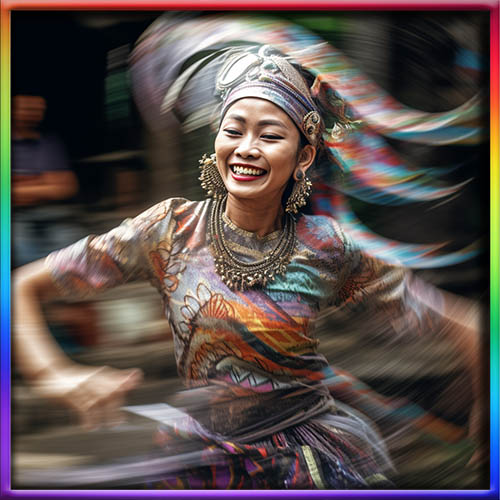
Throughout this essay, we have examined the positive psychological, emotional, and social benefits associated with shaking phenomena. It is essential to recapitulate these benefits as they underscore the transformative potential of shaking experiences and their impact on individuals and communities.
First and foremost, shaking practices have been found to promote stress reduction and relaxation. Engaging in intentional shaking activates the body’s natural relaxation response, leading to a decrease in stress hormones and an increase in feel-good neurotransmitters. This reduction in stress levels not only contributes to a sense of calmness and tranquility but also enhances overall well-being and resilience in the face of life’s challenges.
Moreover, shaking provides a means for emotional release and regulation. By allowing the body to express and release emotions through rhythmic movements and vibrations, individuals can experience a cathartic release of pent-up emotions. This emotional release fosters a sense of emotional well-being, facilitates emotional processing and integration, and contributes to overall emotional balance.
Shaking practices also have profound implications for personal growth and self-discovery. Through shaking, individuals can access altered states of consciousness and tap into their deeper selves. This exploration of the self opens doors to self-reflection, self-awareness, and a deeper understanding of one’s own identity, purpose, and spirituality. Shaking becomes a pathway for self-discovery and self-transcendence, leading to personal growth, increased self-confidence, and expanded horizons.
Furthermore, shaking phenomena hold great potential for social bonding and communal experiences. Whether practiced in traditional spiritual contexts or contemporary adaptations, shaking often occurs within a communal setting. This shared experience fosters a sense of belonging, unity, and connection among participants. The collective shaking creates a shared energy and a sense of being part of something greater than oneself, strengthening social ties and promoting a sense of community.
The positive psychological, emotional, and social benefits of shaking phenomena are numerous and impactful. From stress reduction and relaxation to emotional release and regulation, shaking practices offer individuals a holistic approach to well-being. The transformative nature of shaking experiences contributes to personal growth, self-discovery, and enhanced self-confidence. Additionally, the communal aspect of shaking promotes social bonding, a sense of belonging, and a shared spiritual or transformative journey. By understanding and harnessing the positive benefits of shaking phenomena, individuals and communities can unlock their transformative potential and embark on a path of self-discovery, growth, and connection.
Traditional Spiritual and Contemporary Secular Adaptations

In this essay, we have conducted a comparative analysis between traditional spiritual shaking practices and contemporary secular adaptations. This summary aims to provide an overview of the key findings and insights gained through this comparative exploration.
In examining traditional spiritual shaking practices such as shakers, whirling dervishes, and Pentecostals, we have observed significant similarities and differences. These practices share common threads of ecstatic experiences, altered states of consciousness, and the integration of mind, body, and spirit. The intense physical movements and repetitive shaking motions serve as gateways to transcendence, facilitating spiritual connection, and transformative experiences. However, the cultural and religious contexts in which these practices are embedded shape their manifestation and purpose. The shakers’ focus on communal living, simplicity, and celibacy reflects their unique religious beliefs and commitment to spiritual purity. The whirling dervishes’ spinning movements embody a sacred dance that symbolizes unity with the divine and the cosmic order. Pentecostal shaking experiences, rooted in the belief of being filled with the Holy Spirit, emphasize individual spiritual encounters and the expression of charismatic gifts.
On the other hand, we have explored the contemporary secular adaptations of shaking phenomena. These adaptations have emerged within various spiritual movements and secular contexts, incorporating shaking as a means of personal growth, self-exploration, and well-being. These contemporary interpretations often draw inspiration from traditional shaking practices while adapting them to suit modern sensibilities and diverse belief systems. Examples include ecstatic dance practices, mindfulness-based movement therapies, and somatic experiencing techniques. In these secular adaptations, shaking is utilized as a tool for self-discovery, emotional release, and embodiment. It offers individuals a means to explore their inner world, access altered states of consciousness, and cultivate holistic well-being.
Through our comparative analysis, we have identified both shared elements and distinct characteristics between traditional spiritual shaking practices and contemporary secular adaptations. While the core intention of shaking remains consistent—to facilitate transcendence and personal transformation—the cultural, religious, and contextual factors shape the manifestation, purpose, and significance of these practices. Traditional spiritual shaking practices are deeply rooted in specific religious traditions and carry unique theological beliefs and rituals. In contrast, contemporary secular adaptations focus on individual growth, therapeutic applications, and personal empowerment, often incorporating a blend of spiritual, psychological, and somatic approaches.
Overall, the comparative analysis between traditional spiritual and contemporary secular adaptations has revealed the dynamic nature of shaking phenomena and their adaptability to different contexts and belief systems. It highlights the relevance and continued significance of shaking as a transformative practice in both traditional and modern settings. By exploring and understanding the similarities and differences, we gain a deeper appreciation for the diverse ways in which shaking phenomena contribute to personal growth, self-discovery, and well-being across cultures and time periods.
The comparative analysis between traditional spiritual shaking practices and contemporary secular adaptations demonstrates the multifaceted nature of shaking phenomena. While rooted in different cultural and religious contexts, these practices share a common goal of facilitating transcendence and personal transformation. The adaptability of shaking to contemporary secular contexts reflects its enduring relevance and potential for individual and collective well-being. By embracing the transformative power of shaking, individuals and communities can embark on a path of self-discovery, healing, and spiritual growth, integrating the wisdom of tradition with the evolving needs of the modern world.
Value of Shaking as a Gateway to Transcendence in Various Contexts

In this essay, we have explored the value of shaking phenomena as a gateway to transcendence in various contexts, including traditional spiritual practices and contemporary secular adaptations. As we conclude our analysis, it is important to reflect on the overall significance and enduring relevance of shaking experiences in facilitating personal transformation and spiritual growth.
Shaking, as a physical and embodied practice, holds the potential to transcend the limitations of the mind and connect individuals with deeper aspects of themselves and the world around them. Whether it is the ecstatic movements of shakers, the spinning rituals of whirling dervishes, or the charismatic shaking experiences in Pentecostalism, shaking serves as a catalyst for altered states of consciousness, inner exploration, and connection to the divine.
One of the key takeaways from our analysis is the universal nature of shaking phenomena. While rooted in specific cultural and religious traditions, shaking transcends these boundaries and speaks to fundamental human experiences and needs. The transformative effects of shaking—such as stress reduction, emotional release, self-discovery, and social bonding—have been observed across different contexts, highlighting its potential to address universal human desires for healing, growth, and connection.
Furthermore, the adaptability of shaking practices to contemporary secular contexts underscores their enduring relevance and potential for modern individuals seeking meaning, well-being, and personal development. The integration of shaking into contemporary spiritual movements, therapeutic modalities, and mindfulness practices reflects the recognition of its transformative power in addressing the challenges of the modern world. Shaking serves as a bridge between tradition and innovation, offering individuals a path to transcendence that resonates with their unique beliefs, needs, and aspirations.
It is important to acknowledge that shaking experiences are deeply personal and subjective. While our analysis has shed light on the psychological, emotional, and social benefits associated with shaking, it is crucial to respect and honor the individual experiences and interpretations of those who engage in shaking practices. The diversity of experiences and the rich tapestry of meanings attached to shaking reinforce its multidimensional nature and the potential for profound individual and collective transformation.
Shaking phenomena, whether in traditional spiritual practices or contemporary secular adaptations, hold immense value as gateways to transcendence. The ecstatic and transformative aspects of shaking offer individuals opportunities for personal growth, self-discovery, and enhanced well-being. Shaking practices foster connections between mind, body, and spirit, and cultivate a sense of unity, both within oneself and with others. As we continue to explore the value of shaking, it is essential to approach it with an open mind, recognizing its power to inspire, heal, and guide individuals on their spiritual and personal journeys. By embracing the transformative potential of shaking, we open ourselves to new dimensions of consciousness, growth, and connection, ultimately enriching our lives and the world we inhabit.
Shaking Phenomena and Its Potential Benefits in Diverse Populations and Settings

Throughout this essay, we have explored the positive psychological, emotional, and social benefits of shaking phenomena in various contexts. However, it is important to acknowledge that our understanding of shaking practices is still evolving, and there is a need for further research and exploration to fully comprehend its potential benefits, especially in diverse populations and settings. Therefore, we propose a call for continued investigation into shaking phenomena to broaden our knowledge and inform evidence-based practices.
Firstly, there is a need for empirical studies that examine the physiological mechanisms underlying the positive effects of shaking experiences. Research could explore the impact of shaking on neurobiology, stress hormone regulation, and the activation of specific brain regions associated with emotional regulation and well-being. By understanding the neurophysiological processes involved in shaking, we can gain insights into how it affects the mind and body, providing a scientific basis for its therapeutic applications.
Secondly, future research should consider the cultural, social, and contextual factors that influence the experiences and outcomes of shaking practices. Different populations may have unique beliefs, interpretations, and cultural frameworks surrounding shaking phenomena. Exploring how shaking is understood and practiced within diverse cultural and religious contexts can deepen our understanding of its meaning and significance, and inform culturally sensitive and inclusive approaches to its utilization.
Additionally, there is a need to investigate the potential therapeutic applications of shaking practices in specific populations, such as individuals with trauma-related disorders, anxiety, or depression. Understanding how shaking can be integrated into therapeutic interventions and mental health treatments can pave the way for innovative and effective approaches to healing and well-being. Research should explore the long-term effects of shaking interventions, assess their efficacy compared to traditional therapies, and identify the optimal conditions for its implementation.
Furthermore, there is a call for research that examines the potential benefits of shaking in non-spiritual or secular contexts. While shaking practices have traditionally been associated with spiritual and religious beliefs, contemporary adaptations have emerged within secular frameworks. Investigating the psychological, emotional, and social effects of shaking in these contexts can shed light on its broader applications beyond traditional spiritual practices, paving the way for its integration into various therapeutic, mindfulness, and self-development approaches.
Lastly, future research should consider the experiences and perspectives of individuals who engage in shaking practices. Qualitative studies can explore the subjective experiences, meaning-making processes, and personal narratives of individuals who incorporate shaking into their lives. Understanding the individual variations in experiences and the diverse outcomes can provide valuable insights into the nuances and complexities of shaking phenomena.
While we have explored the positive benefits of shaking phenomena in this essay, there is a pressing need for further research and exploration. By delving deeper into the physiological, psychological, and social aspects of shaking, as well as considering diverse populations and contexts, we can enhance our understanding of its potential benefits and optimize its applications. This research has the potential to contribute to evidence-based practices, inform therapeutic interventions, and promote well-being in individuals and communities worldwide. Therefore, we call for continued interdisciplinary research and collaboration to unlock the full potential of shaking phenomena and its transformative power.
Shaking and Ecstatic Trancework
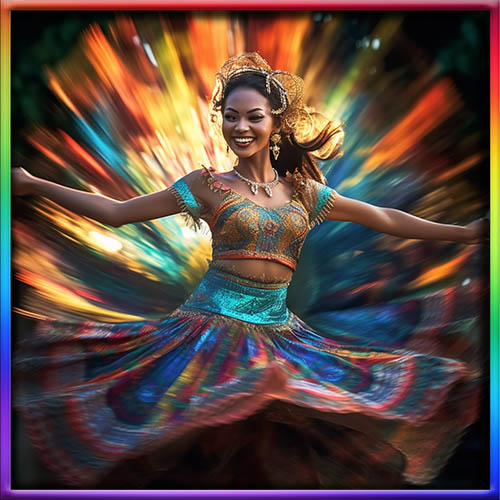
Yes, you really can trancework hypnosis work . . . to explore things sensual as well as within the context of ecstatic shaking work.
As far as hypnosis goes, I do quite a bit of work developing hypnotic processes to ecstatic trance results.
I am particularly interested in adapting traditional methods to contemporary hypnotic methods as well as in creating wholly original methods outside of the traditional model.
Here’s just a sampling of work I have done over the years to very good effect.
Shaking Trance
You can also see the video at https://www.youtube.com/watch?v=5cddQ_vH8gs.
How to do TRANCE MOVEMENT! VR180
You can also see the video at https://www.youtube.com/watch?v=fVELoMcobsE.
Ouija Dancing
You can also see the video at https://www.youtube.com/watch?v=sObOOCvkiiY.
Hand Shaking (Mindgames Episode 19)
You can also see the video at https://www.youtube.com/watch?v=15Y9LRaAVFY.
Happy Toy Hypnosis with Brian David Phillips
You can also see the video at https://www.youtube.com/watch?v=EYMBVl3Xn10.
Happy Toy Waking Hypnosis in Bangalore
You can also see the video at https://www.youtube.com/watch?v=8cr_np8mt_o.
Happy Toy Hypnosis Fun with Brian David Phillips
You can also see the video at https://www.youtube.com/watch?v=ys3QkzXWgow.
Hypnotic Happy Toy with Brian David Phillips
You can also see the video at https://www.youtube.com/watch?v=lKmbTRWlv04.
Happy Toy Hypnosis with Brian David Phillips
You can also see the video at https://www.youtube.com/watch?v=5uMwxBtNbOw.
How to do BODY BOUND AUTOQUESTIONING Process Again! VR180
You can also see the video at https://www.youtube.com/watch?v=esY7yQw4THQ.
And . . . A Bit of Fun!
You can also see the video at https://www.youtube.com/watch?v=nfWlot6h_JM.
This is just the tip of the iceberg as you might know from my videos and more. Of course, those wishing to explore even more may consider learning packages such as our ErosPsyMagick+ program at https://briandavidphillips.net/erospsymagickplus which is of particular interest as it has everything rolled into one comprehensive package . . . seriously it’s the whole trancework kit-n-kaboodle.
How Automatistic Shaking Practices Can be Adapted to Contemporary Secular Non-Religious Practice for Personal Spiritual, Psychological, Emotional, Social, and Community Benefits
A Step-by-Step Simple Program with Comprehensive Positive Impact

In this section, we will outline a step-by-step program that demonstrates how automatistic shaking practices can be adapted to contemporary secular non-religious contexts, providing individuals with opportunities for personal growth, enhanced well-being, and social connection. This program is designed to be accessible and adaptable, allowing individuals to engage in shaking practices in a way that aligns with their own beliefs and needs, without any religious or spiritual associations.
Step 1: Creating a Safe and Sacred Space
Begin by setting up a dedicated space that feels safe and inviting. This could be a room in your home, a quiet corner of a park, or any space where you feel comfortable. Clear the space of clutter and create a simple altar or focal point that holds personal meaning for you. This space will serve as a container for your shaking practice, providing a sense of sacredness and intention.
Step 2: Setting Intentions and Mindfulness
Before engaging in shaking, take a few moments to set clear intentions for your practice. Reflect on what you hope to gain from the experience, whether it’s releasing stress, gaining clarity, or connecting with your body. Practice mindfulness by bringing your awareness to the present moment, focusing on your breath, and grounding yourself in the here and now.
Step 3: Warm-Up and Body Awareness
Start with gentle warm-up exercises to prepare your body for shaking. Stretch your muscles, perform light aerobic movements, and engage in deep breathing exercises. This helps release tension and promotes body awareness. Pay attention to any sensations or emotions that arise during this warm-up phase, cultivating a deeper connection with your body.
Step 4: Intentional Shaking
Begin the shaking practice by standing or sitting in a comfortable position. Close your eyes and allow your body to start shaking spontaneously. Embrace the natural rhythm and intensity of the shaking, surrendering to the experience without judgment or control. Focus on the sensations in your body and let go of any thoughts or expectations. Trust in the innate wisdom of your body to guide the shaking process.
Step 5: Embracing the Release
As the shaking continues, you may notice emotions, memories, or tensions surfacing. Allow these experiences to arise without resistance. Embrace the release that comes with shaking, whether it’s physical tension, emotional blockages, or mental stress. Trust in the power of shaking to facilitate the release and integration of these experiences, promoting a sense of liberation and emotional well-being.
Step 6: Integration and Reflection
After the shaking practice, take some time to integrate the experience. Sit quietly and reflect on the sensations, emotions, and insights that emerged during the shaking. Journaling can be a helpful tool for processing and documenting your experience. Consider the ways in which the shaking practice has impacted your physical, emotional, and mental well-being.
Step 7: Community Sharing and Connection
To enhance the social and community benefits of shaking, consider sharing your experiences with others who are open to these practices. Engage in dialogue, join local groups or workshops, or participate in online communities dedicated to shaking. Connecting with like-minded individuals can provide support, validation, and a sense of belonging as you continue your shaking journey.
Step 8: Regular Practice and Personal Growth
Commit to regular shaking practice, whether it’s daily, weekly, or at a frequency that suits your lifestyle. Consistency is key to experiencing the cumulative benefits of shaking. Monitor your personal growth and changes over time, celebrating milestones and acknowledging the positive transformations that arise from your dedication to shaking.
By following this step-by-step program, individuals can adapt automatistic shaking practices to contemporary secular non-religious contexts, experiencing the profound benefits on spiritual, psychological, emotional, social, and community levels. It offers a simple yet comprehensive approach that empowers individuals to explore their inner selves, cultivate self-awareness, and foster personal growth in a secular and inclusive manner. As shaking practices continue to evolve and adapt, it is crucial to embrace their potential to enrich and enhance the lives of individuals in diverse settings.
Frequently Asked Questions:
Surprising Benefits of Hypnotically Induced Ecstatic Trance States

Q: What is shaking phenomena?
A: Shaking phenomena refer to involuntary or intentional shaking of the body as part of spiritual, religious, or secular practices aimed at inducing altered states of consciousness and facilitating personal transformation.
Q: Are shaking practices only associated with religious or spiritual contexts?
A: While shaking practices have historical roots in various spiritual and religious traditions, contemporary adaptations have emerged in secular contexts as well. Shaking can be experienced and explored beyond religious or spiritual frameworks.
Q: What are the psychological, emotional, and social benefits of shaking experiences?
A: Shaking experiences have been reported to promote stress reduction, emotional release, increased self-awareness, enhanced well-being, and a sense of connection and community.
Q: Can shaking practices be adapted to secular non-religious contexts?
A: Yes, shaking practices can be adapted to secular non-religious contexts, allowing individuals to engage in the transformative power of shaking without any religious or spiritual associations.
Q: How can shaking practices be integrated into secular contexts?
A: By removing religious rituals and beliefs, shaking practices can be tailored to focus on individual experiences, personal growth, emotional release, and well-being within secular settings.
Q: Is shaking a form of therapy?
A: Shaking practices can be therapeutic in nature, promoting emotional regulation, stress reduction, and resilience. However, it is important to note that professional guidance is recommended when using shaking as a therapeutic intervention.
Q: What is the role of mindfulness in shaking practices?
A: Mindfulness plays a crucial role in shaking practices, as it helps individuals cultivate present-moment awareness, deepen their connection with the body, and embrace the sensations and emotions that arise during shaking.
Q: Are there any physiological explanations for the benefits of shaking experiences?
A: Shaking practices may activate the body’s natural self-regulation mechanisms, release tension and stress, stimulate the parasympathetic nervous system, and promote the release of endorphins and other feel-good chemicals in the brain.
Q: How can shaking practices contribute to personal growth and self-discovery?
A: Shaking practices provide a means for individuals to explore their inner selves, release emotional blockages, gain clarity, and cultivate self-awareness. They offer a pathway to personal growth, self-discovery, and expanded consciousness.
Q: Can shaking experiences be shared in a community setting?
A: Yes, shaking experiences can be shared in a community setting, fostering a sense of connection, support, and shared exploration. Engaging with like-minded individuals can enhance the transformative and social aspects of shaking practices.
Q: Can shaking practices be beneficial for individuals with mental health conditions?
A: While shaking practices may have potential therapeutic benefits, individuals with mental health conditions should consult with a healthcare professional or therapist before engaging in shaking practices as part of their treatment plan.
Q: Can shaking practices be incorporated into existing mindfulness or meditation practices?
A: Yes, shaking practices can complement existing mindfulness or meditation practices, providing an embodied and dynamic approach to deepening awareness and connecting with the present moment.
Q: Are there any specific instructions or guidelines for engaging in shaking practices?
A: While there are no rigid rules, it is important to approach shaking practices with an open mind, a willingness to surrender to the experience, and a commitment to self-care. It is recommended to learn from experienced practitioners or seek guidance from qualified teachers.
Q: Are there any risks or contraindications associated with shaking practices?
A: Individuals with physical limitations, injuries, or medical conditions should consult with a healthcare professional before engaging in vigorous shaking practices. It is important to listen to your body and modify the intensity of shaking as needed.
Q: How often should one engage in shaking practices?
A: The frequency of shaking practices can vary depending on personal preferences and individual needs. Some individuals may choose to practice daily, while others may find weekly or monthly sessions more suitable. It is important to establish a rhythm that feels sustainable and supportive.
Q: Can shaking practices be combined with other forms of self-care or personal development practices?
A: Absolutely. Shaking practices can be integrated with various self-care practices such as breathwork, movement, body-based therapies, journaling, and creative expression. Combining different modalities can enhance the overall transformative experience.
Q: Can shaking practices be explored individually or is a group setting recommended?
A: Shaking practices can be explored individually or in a group setting, depending on personal preferences. Both approaches have their benefits. Exploring individually allows for personal introspection, while group settings provide opportunities for shared experiences and collective energy.
Q: Are there any cultural considerations when adapting shaking practices to secular contexts?
A: It is essential to approach shaking practices with cultural sensitivity and respect. While shaking practices can be adapted and personalized, it is important to acknowledge and honor their cultural origins, giving credit to the traditions from which they originated.
Q: What is the future of shaking practices?
A: The future of shaking practices is promising. As more individuals seek holistic approaches to personal growth, self-discovery, and well-being, shaking practices have the potential to gain wider recognition and acceptance, leading to further research, exploration, and integration into diverse populations and settings.
Q: Where can I learn more about trancework practice by Brian David Phillips?
A: Of course, those wishing to explore even more may consider learning packages such as our ErosPsyMagick+ program at https://briandavidphillips.net/erospsymagickplus which is of particular interest as it has everything rolled into one comprehensive package . . . core skills, metaphysical magickal psychic, and eroticatrance ecstatic states.
You Can Learn More

If you would like to learn more about using hypnosis techniques, consult our Core Skills program and other products found in our online store at https://briandavidphillips.net/store (you may wish to check out our package programs for even more value).
Our ErosPsyMagick+ program at https://briandavidphillips.net/erospsymagickplus is of particular interest as it has everything rolled into one comprehensive package . . . core skills, metaphysical magickal psychic, and eroticatrance ecstatic states.
If you’re in Taiwan and interested in hypnosis, check the services page linked to in the top left sidebar. Not in Taipei? Check the store for recordings in the same menu area as well as links to lots and lots of info and goodies. Of course, browsing this site will bring you to a digital ton of positive resources on a wide variety of topics as well.
Live Trance and Prosper,
Brian David Phillips
Trance Wizard
www.BrianDavidPhillips.net
Tarot Decks and More
https://www.makeplayingcards.com/sell/wakingdreams
